Welcome Inventors! If Thomas Edison had a blog, do you think he would write about his failed light bulb attempts? I do. Today’s post is not pretty, but I’m sharing it because sometimes the best lessons come from the belly flops and face plants.

I recently went to a play gym where there were bean bag launchers. Talk about fun! I wanted to buy one, but the supervisor said I could make one if I’m handy with a jig saw. Turns out “handy” is a relative term.
The launcher works – don’t get me wrong. So, if you want to give this a try, pull out a jig saw, an electric drill, some pallet wood (or whatever kind of wood you have handy) and sharpie. Measuring tape also helps, a mason jar lid, and a handful of screws. Be safe!
Cut a board of wood about 2 feet long and 4 inches wide (above). I just cut a board off of the pallet, but you do what works for you.
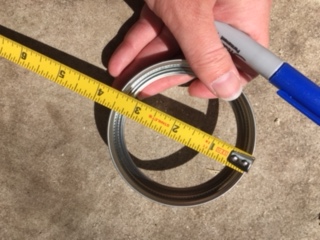
Take your mason jar lid, and mark it at the half-way spot on both sides. I made a line all the way down the side so there was blue on the front and the back.
Use your lid to make two semicircles on another piece of wood. Trace the outside, and cut along the lines you made with your jig saw.
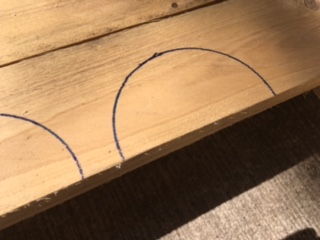
Measure and mark your long board so that your two semicircle pieces are exactly in the middle. Space them a about an inch from the outside edge respectively. This gets a little bit tricky. I guessed with this part and it worked out fine.
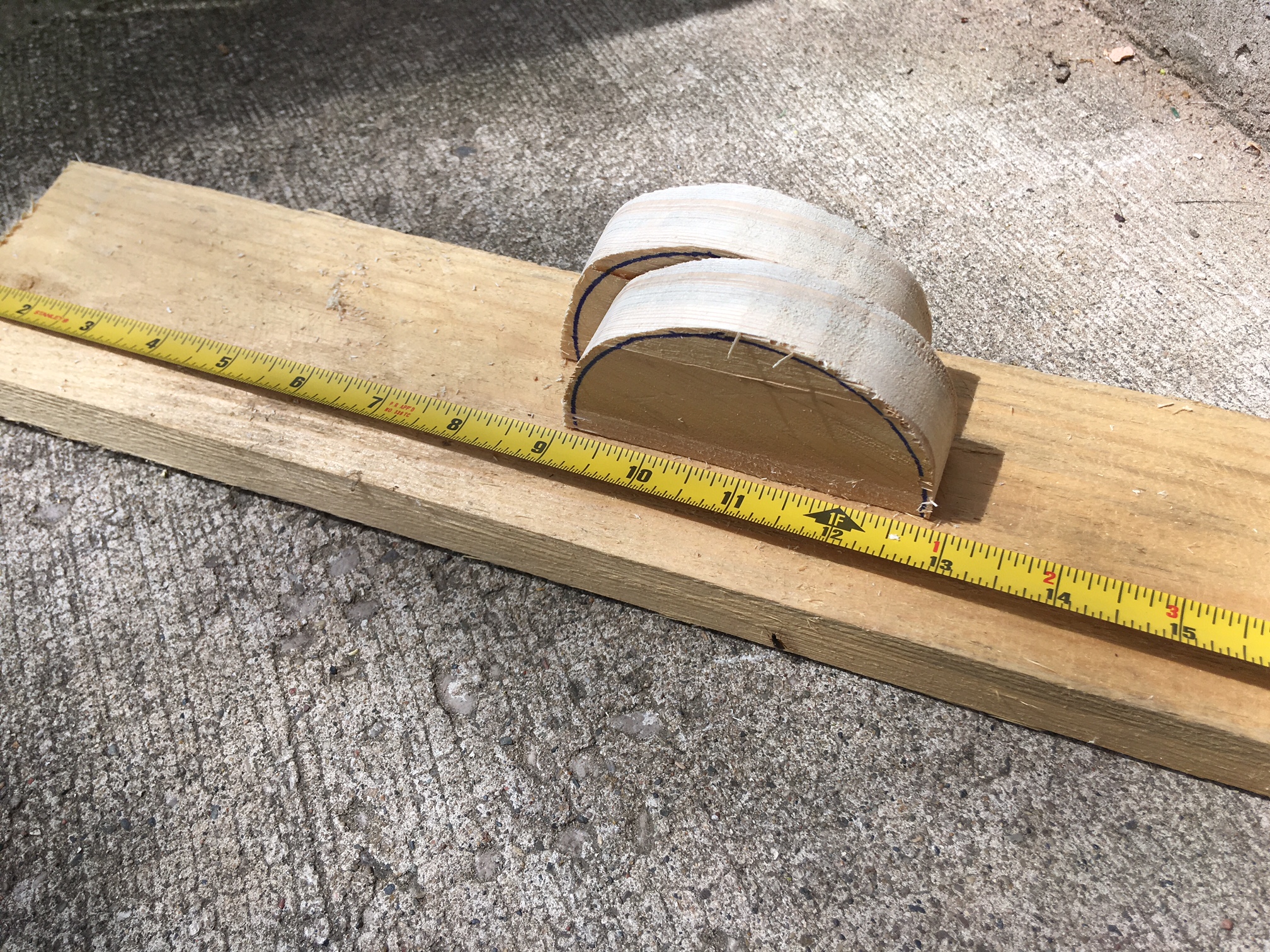
Choose screws that are the appropriate size to attach the semicircles to the board. That was my fail. I knew the longer screws were risky, but I thought if I put them in at the right angle I’d be in the clear.

Two screw tips popped out the top of my launcher. Ouch. So, I cut a little piece of wood and put it on the top to make it more safe. Then one of the screws split the extra piece of wood.
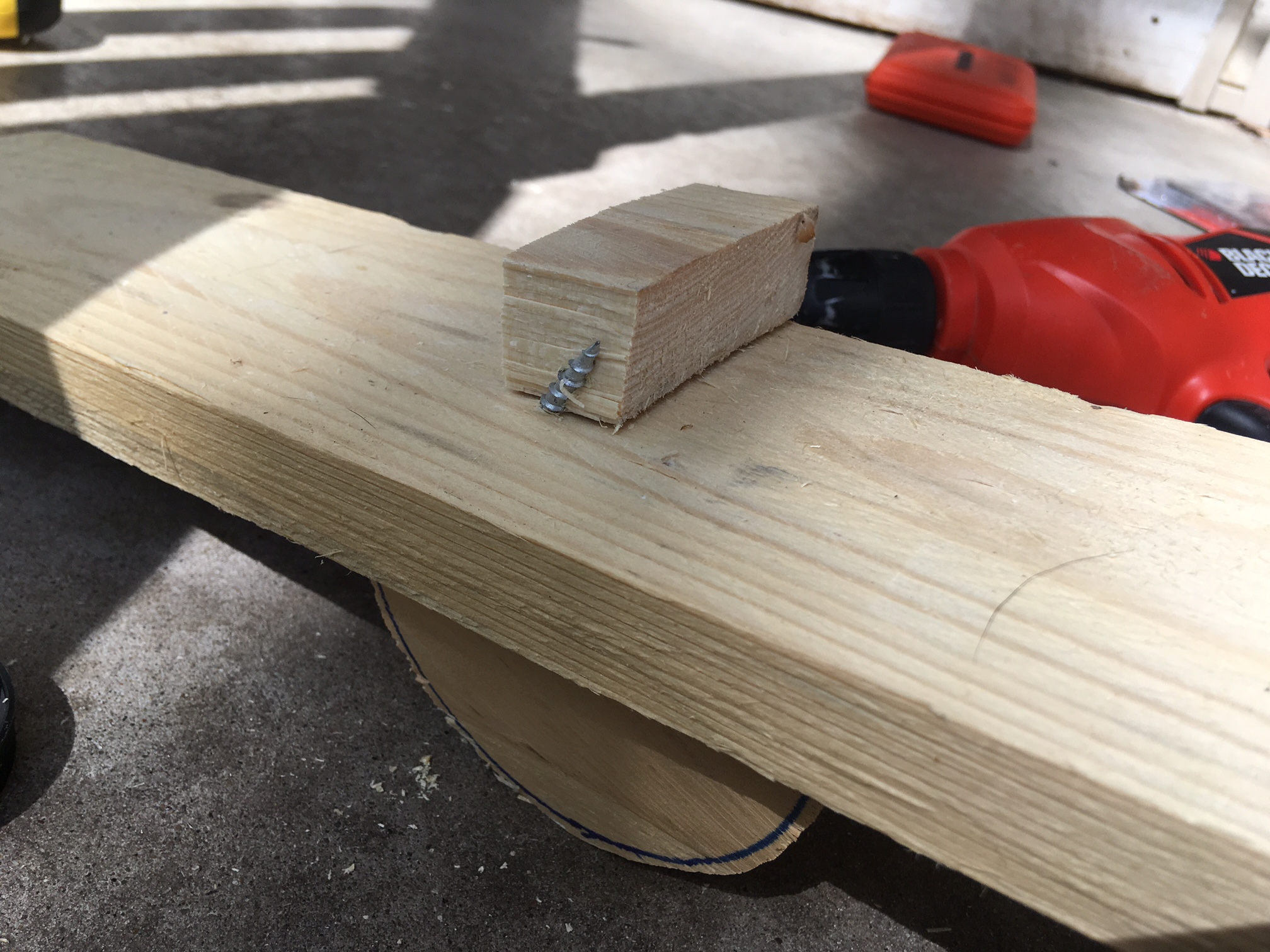
What do we know is always true? When all else fails: duct tape!
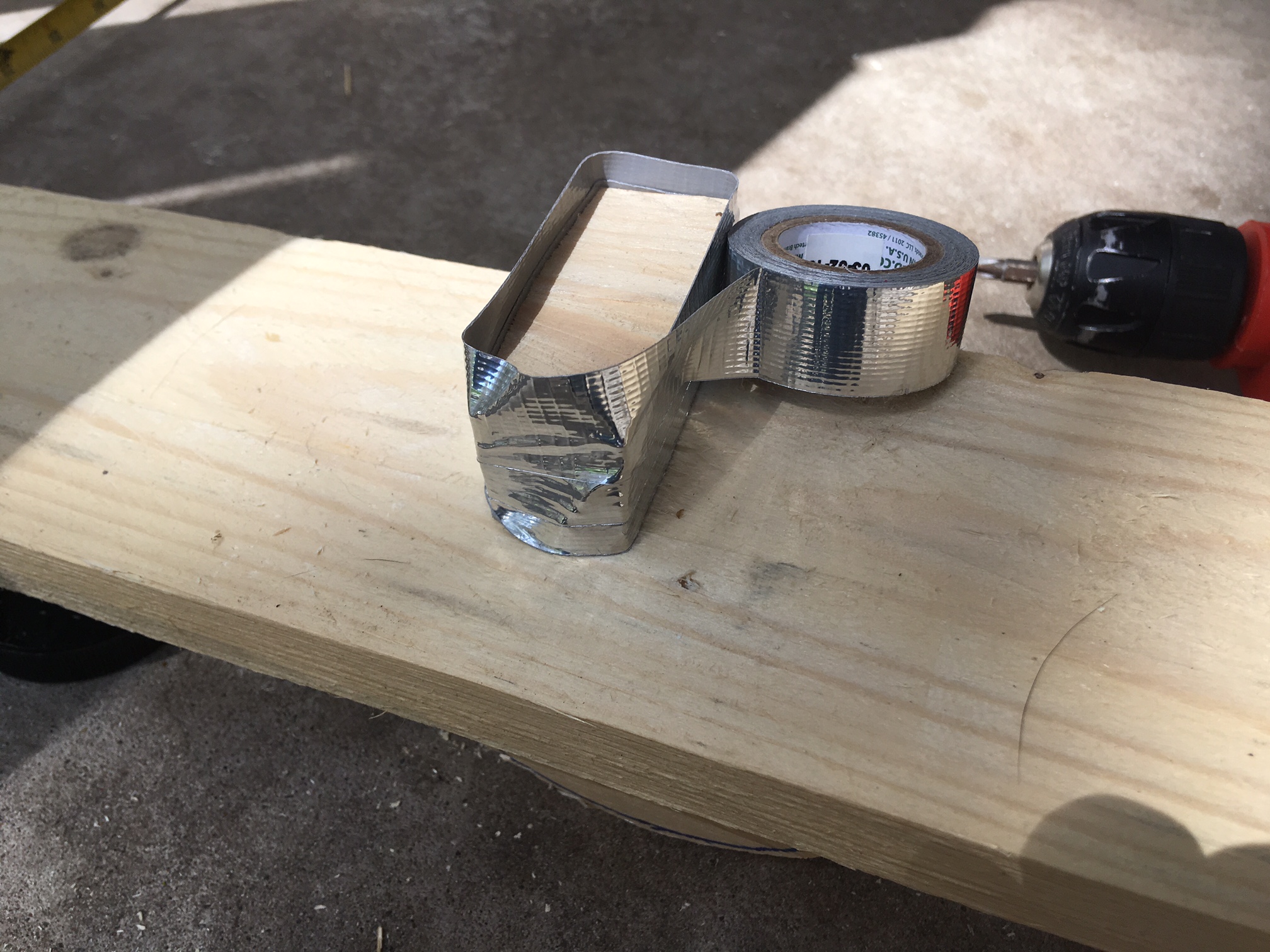
The good news: this puppy works! My turkey bean bag can fly! Mishap modifications are all part of the fun of inventing. Not everything is going to go the way you plan the first time. Or maybe ever. Don’t let the belly flops keep you from learning how to dive.
[wpvideo 6PJsGgAP]
Thank you for sharing your time and any comments! Until next time, enjoy this imperfect, beautiful life and invent YOUR story!
Welcome Inventors! Oh yes, it’s more fun with paint sticks. It’s the snowball effect – or in this case paintball. Moving on. ????
These paint stick wall sconces are lightweight and you can give them great personality. They cost next to nothing to make. All you need is a glue gun, paint sticks (these took seven sticks apiece) wood stain and a cylindrical object. I used a candle holder.
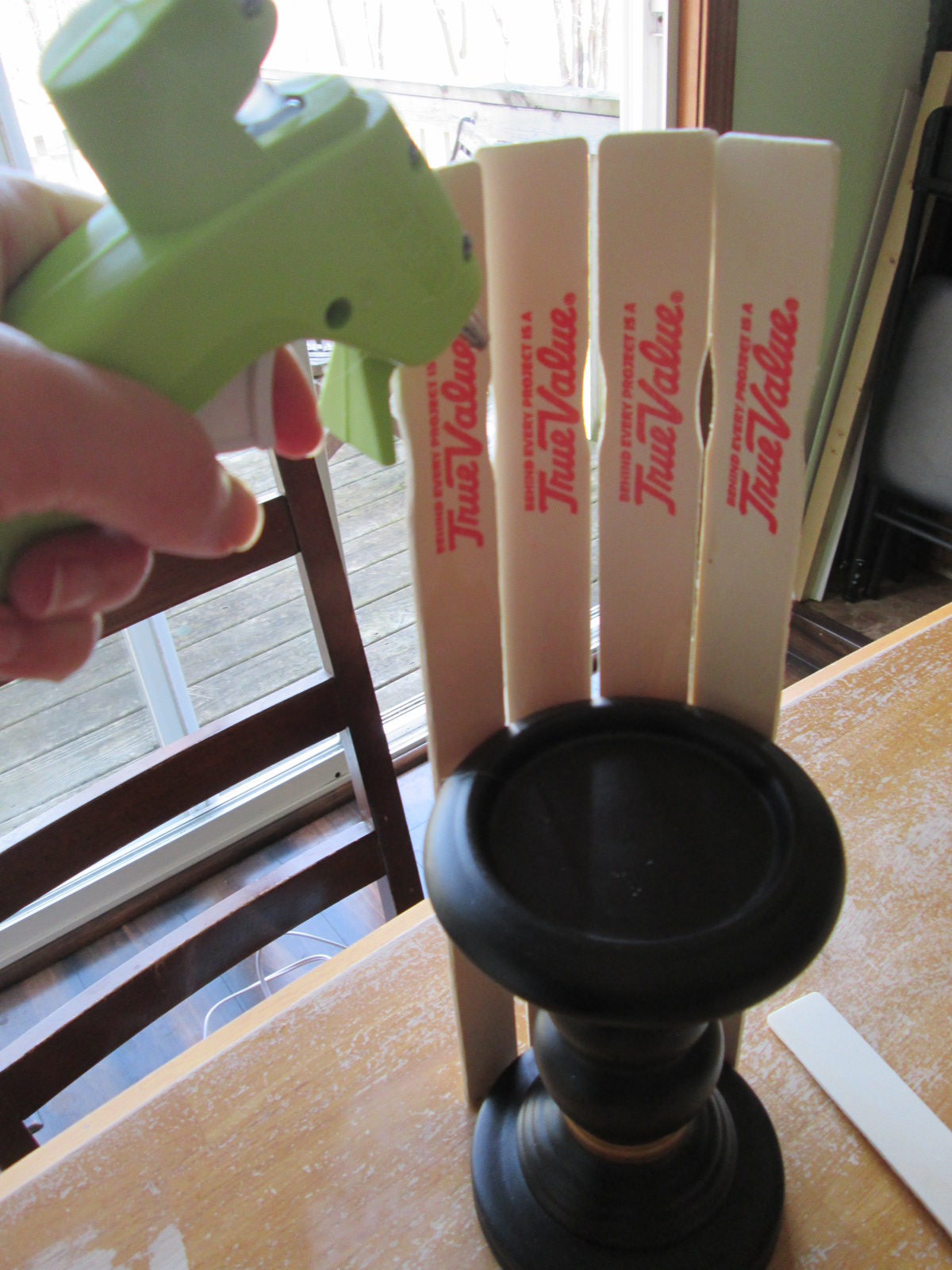
Step 1: Place the glue sticks around the cylinder (if they are printed on one side, be sure to put that side facing in) and hot glue them together. I glued the tops together first and then flipped it over to glue the bottom half.

Step 2: Stain your sconce. Go outside or to a well-ventilated area, and brush away! If you’ve never stained wood before, people usually go with the grain of the wood, but do what you like. It’s yours! You could also stain your pieces before you glue them together, but I chose not to.
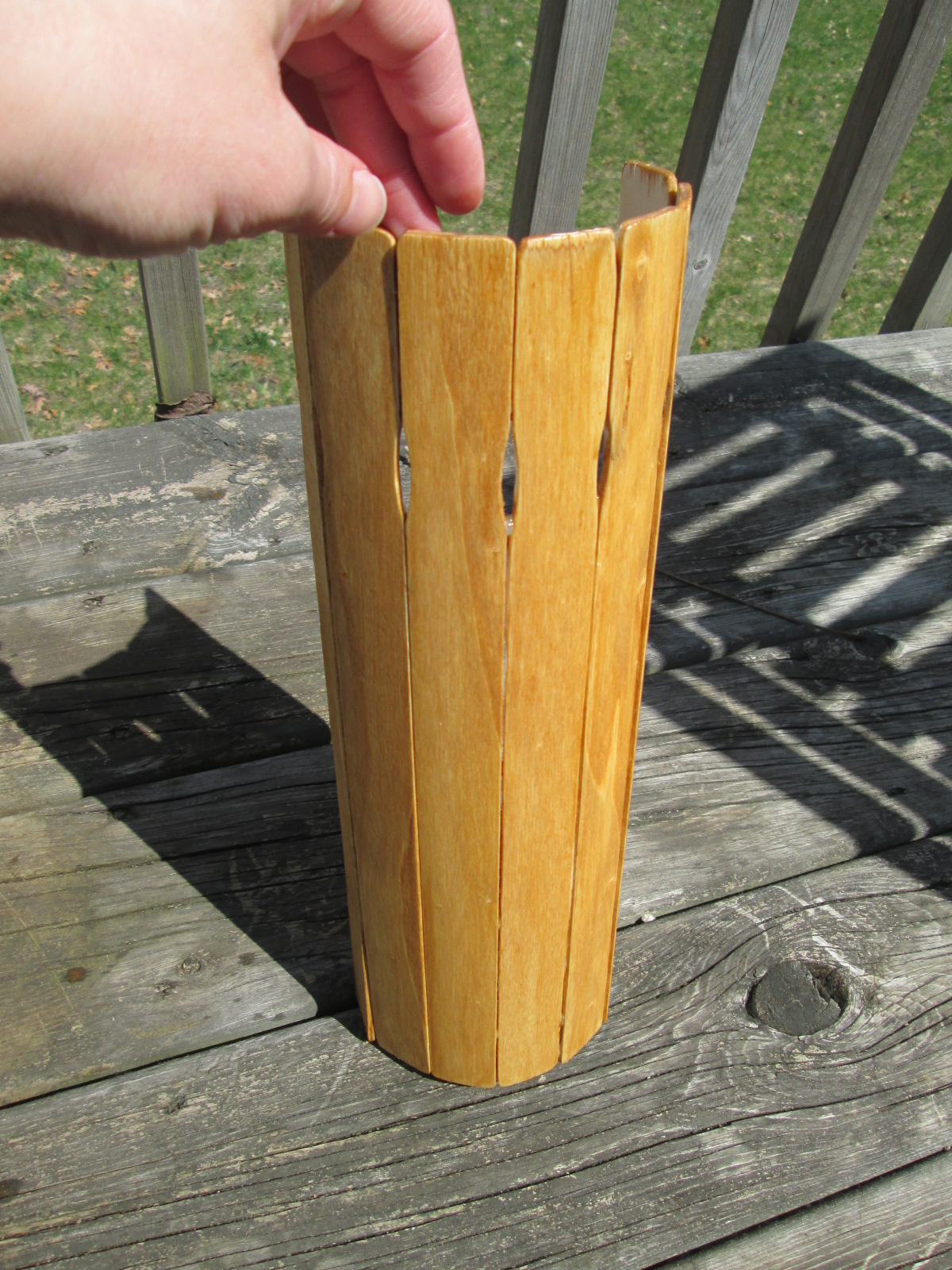
Step 3: Add your style.
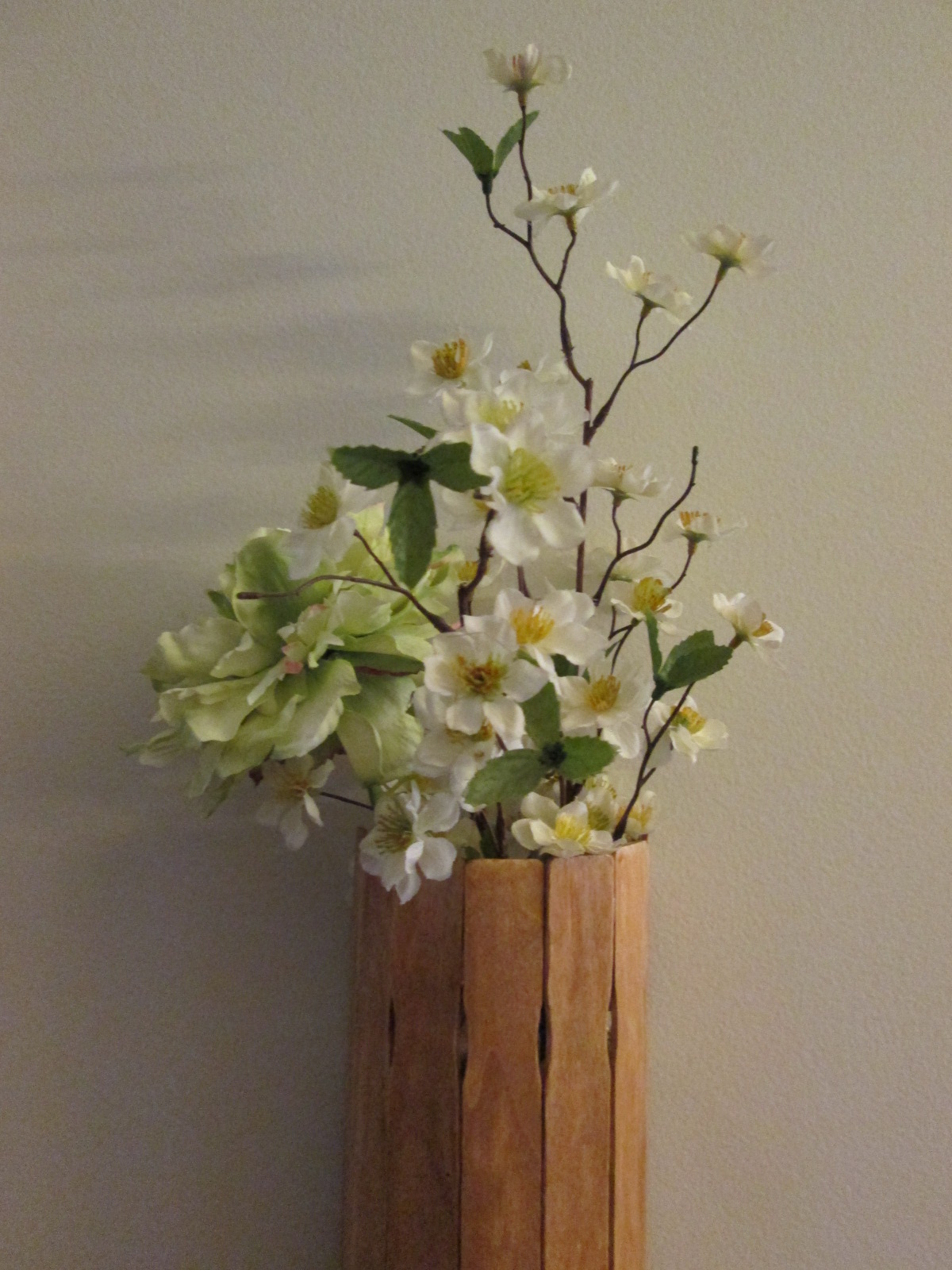
I liked these with flowers, but I also thought I’d try a night version. They are sconces after all! I mapped out a simple design with pencil and drilled holes in the middle of the sconce.
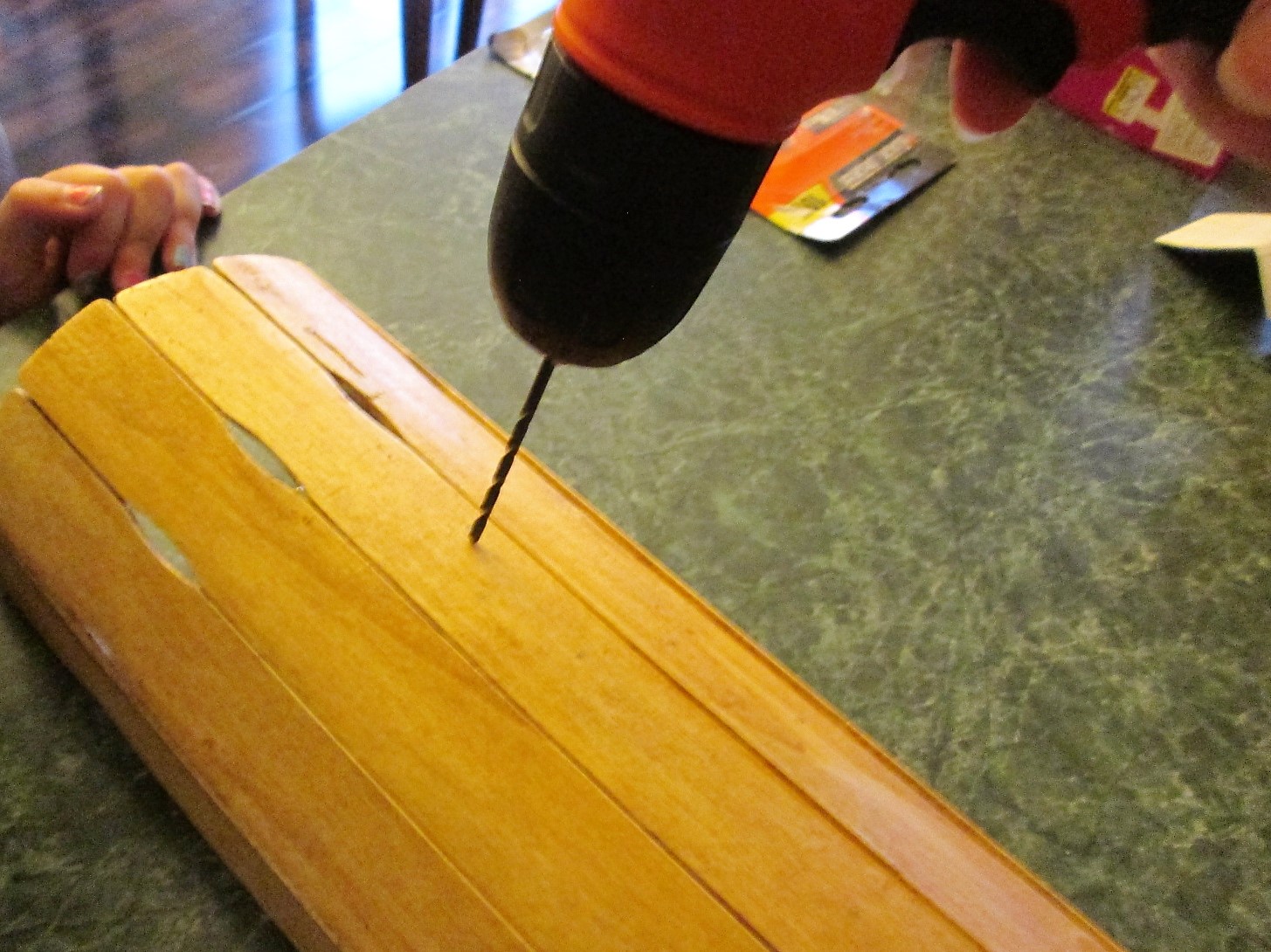
I cut the lid of a coffee container to (more or less) make a ledge for my candles, and added a wire on top.
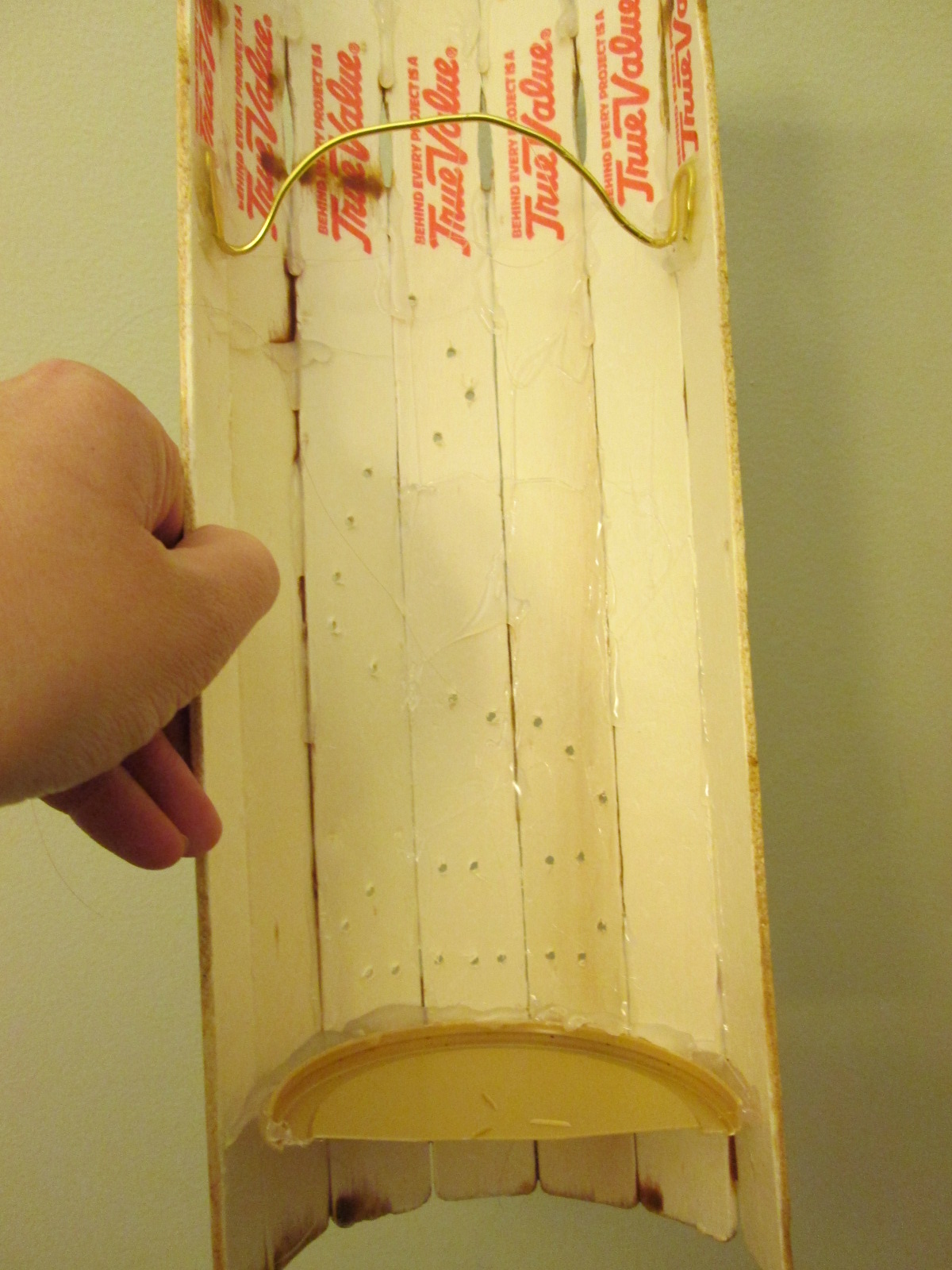
And now I have a paint stick wall sconce!

I’m going to play around with some different designs, but this was fun. Let me know how it goes and what you do with your paint sticks. Thank you for stopping. As always, enjoy your day and invent your story!
Throughout the history of mankind, every culture tells stories. Tales delight, teach, scare, and inspire audiences world-wide every day. I am captivated by stories. That is why I called my website Invent Your Story.
Whether from fiction or non-fiction, poetry or prose, strangers or friends stories are precious. Each person on this planet is valuable, and everyone has a story. Taking time to listen, learn, and grow from experiences with others is one of life’s greatest joys.
Inventing your story means many things, but I want to list a few for the curious. Here are 3 principles of story invention that I find valuable:
- Live Your Story: Each day is a story and your adventure is unfolding with every breath and choice. Take hold of your story and your ability to choose what you do with the days you are given.
- Tell Your Stories: If you’re a writer, a mechanic, a circus performer, or my Uncle Johnny you have stories to tell. You don’t have to write them, but do share them with others. You will have an impact.
- Practice Invention: Invention has two key definitions: 1) something, typically a process or device that has been invented, and 2) creative ability. You are a creation with the creative ability to solve problems, dream, appreciate, develop, and explore. Use your gifts and see what amazing things happen when you invent.
Stories enrich and shape the life of each person alive today. Invention and its powers do the same thing. Some combination of these two powerful elements is my goal each day.
If you’ve read me before, you know what’s coming next. As always, thank you. Now go. Invent YOUR story.
Welcome Inventors. What catches your eye? I love life’s unusual suspects. Metal art has texture and depth that appeals to me, so I set out to make the cheapest metal art ever.
I used four different kinds of La Croix carbonated water cans. The drink was tasty and the colors were cool – everybody wins! To make the simple paint stick backdrop, see my last post.

Step 1: Cut the Cans. Take a pair of sharp scissors and puncture the can, then cut the metal into your desired shapes. I like flowers and wanted a spring theme, so I made long, thin strips for green stems, and I cut fatter pieces in white and pink for petals.

I did not cut myself while handling the metal, but I would not recommend this project for kids. If you want to do a similar project with kids, you can use these same techniques with paper and get amazing results.
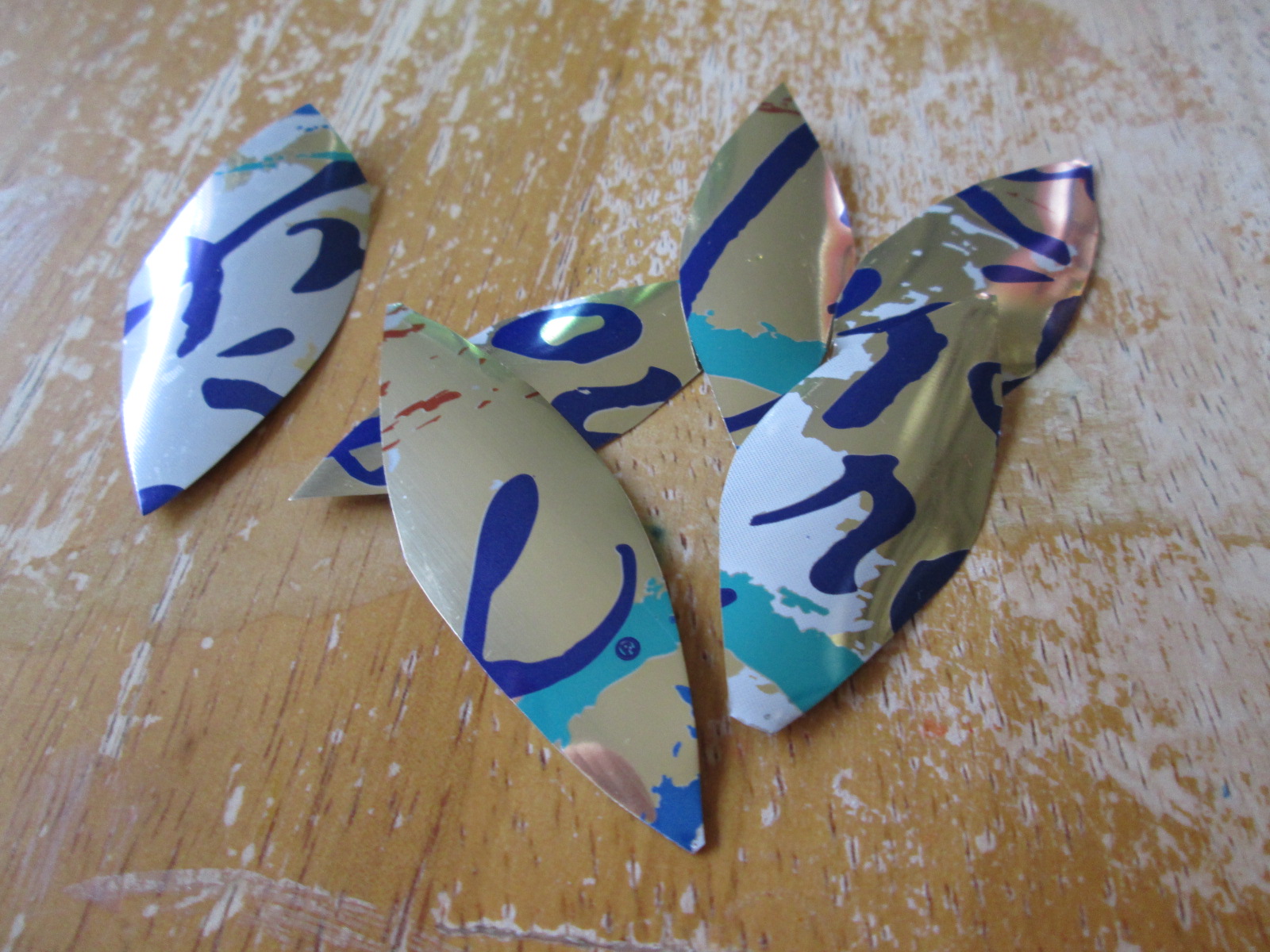
Step 2: Shape the Pieces. To make your can art really pop, (it had to be punned) use a variety of markers, pencils, and whatever is handy to shape the cut metal pieces. I wrapped my green strips around a pencil to make curly stems.
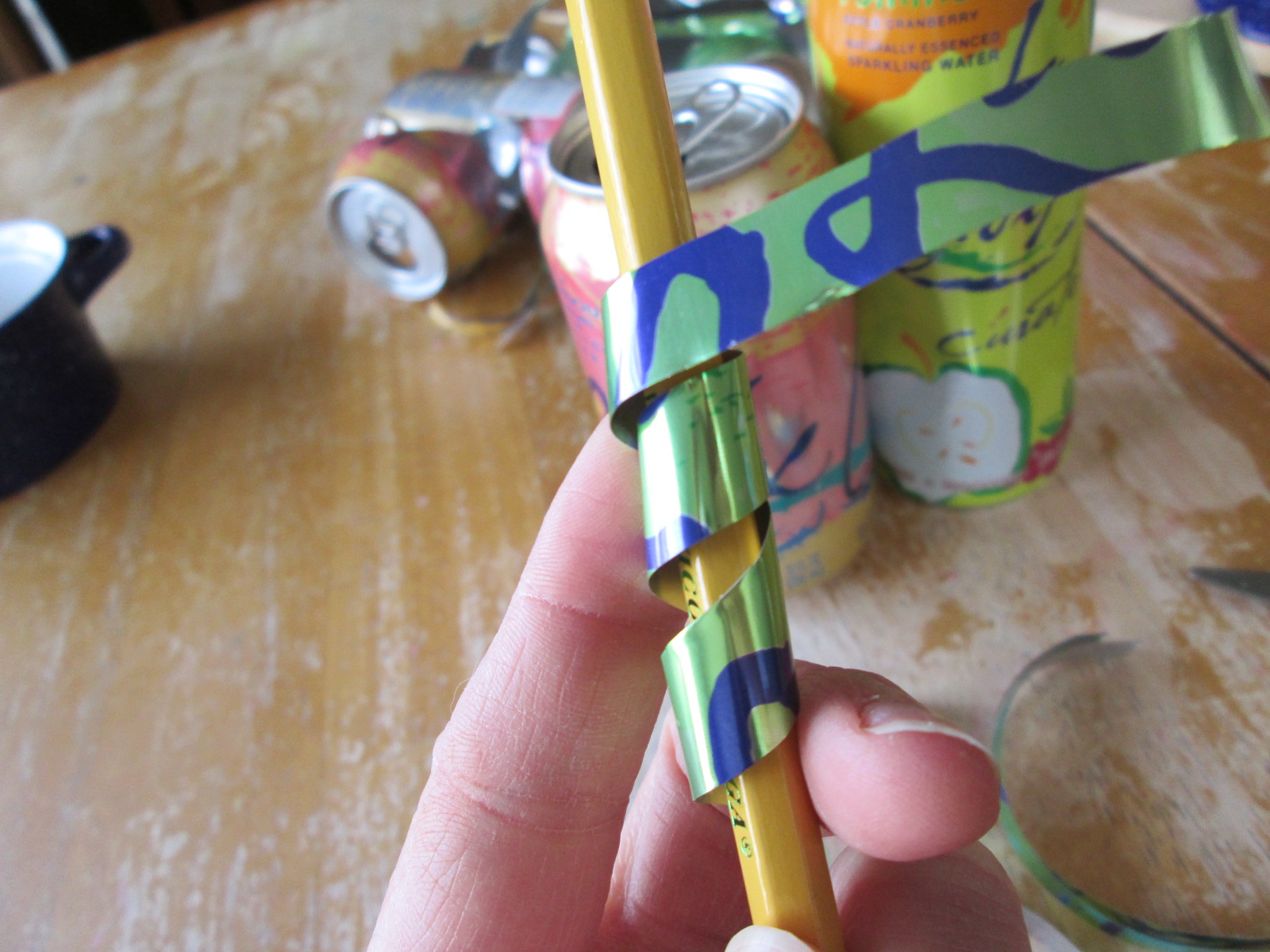
I cut circles of yellow and wrapped them over the flat top of a pencil to create the centers for pink flowers.
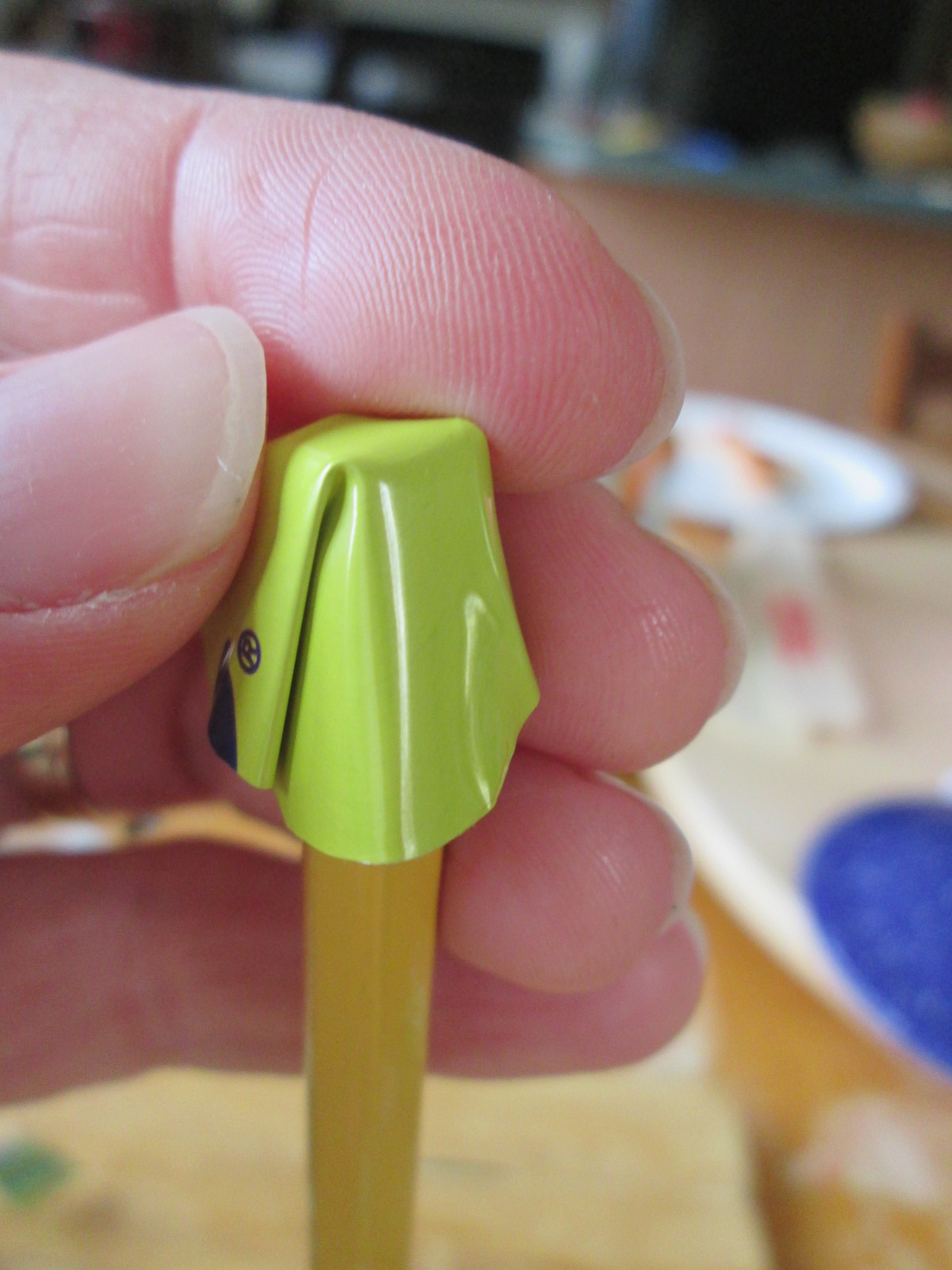
For the bigger petals, I used a marker to make a softer look.
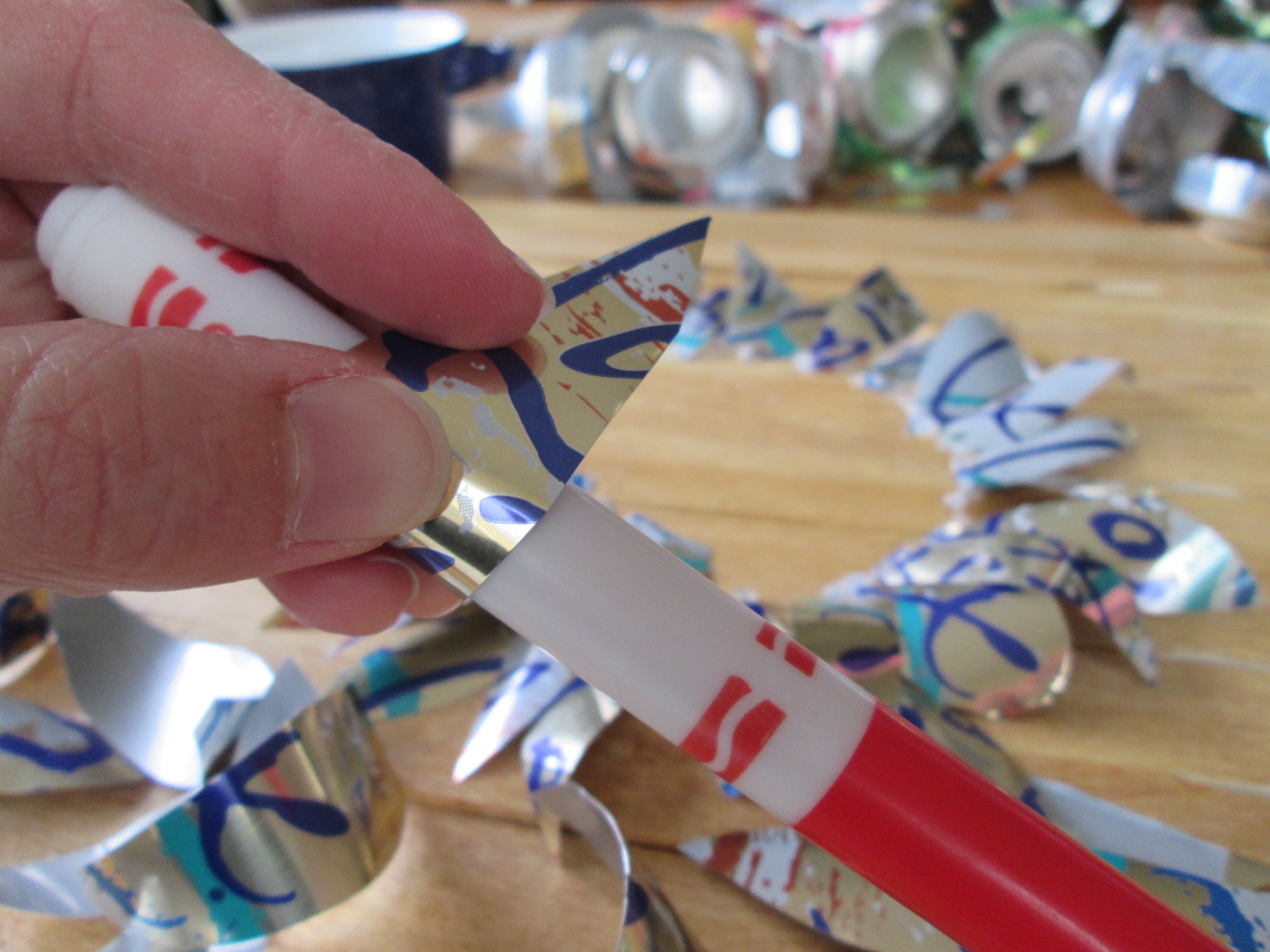
Step 3: Glue the Metal. After your pieces are ready, hot glue them to your backdrop. For the large flower, I started with a big circle (pictured above) to serve as the full circumference of the flower. Working from the outside in, I glued the rows of petals (about half a flower at a time) until I reached the center. A small petal finished the piece.
For the pink flowers, I glued the pink petals in a small circle first, and then I dotted the yellow centers with hot glue to secure them in the middle.

Glue a wire or string on the back, and it’s ready to hang on the wall! Like all art, this has endless possibilities. Have fun using your imagination. Enjoy your day, and invent your story!
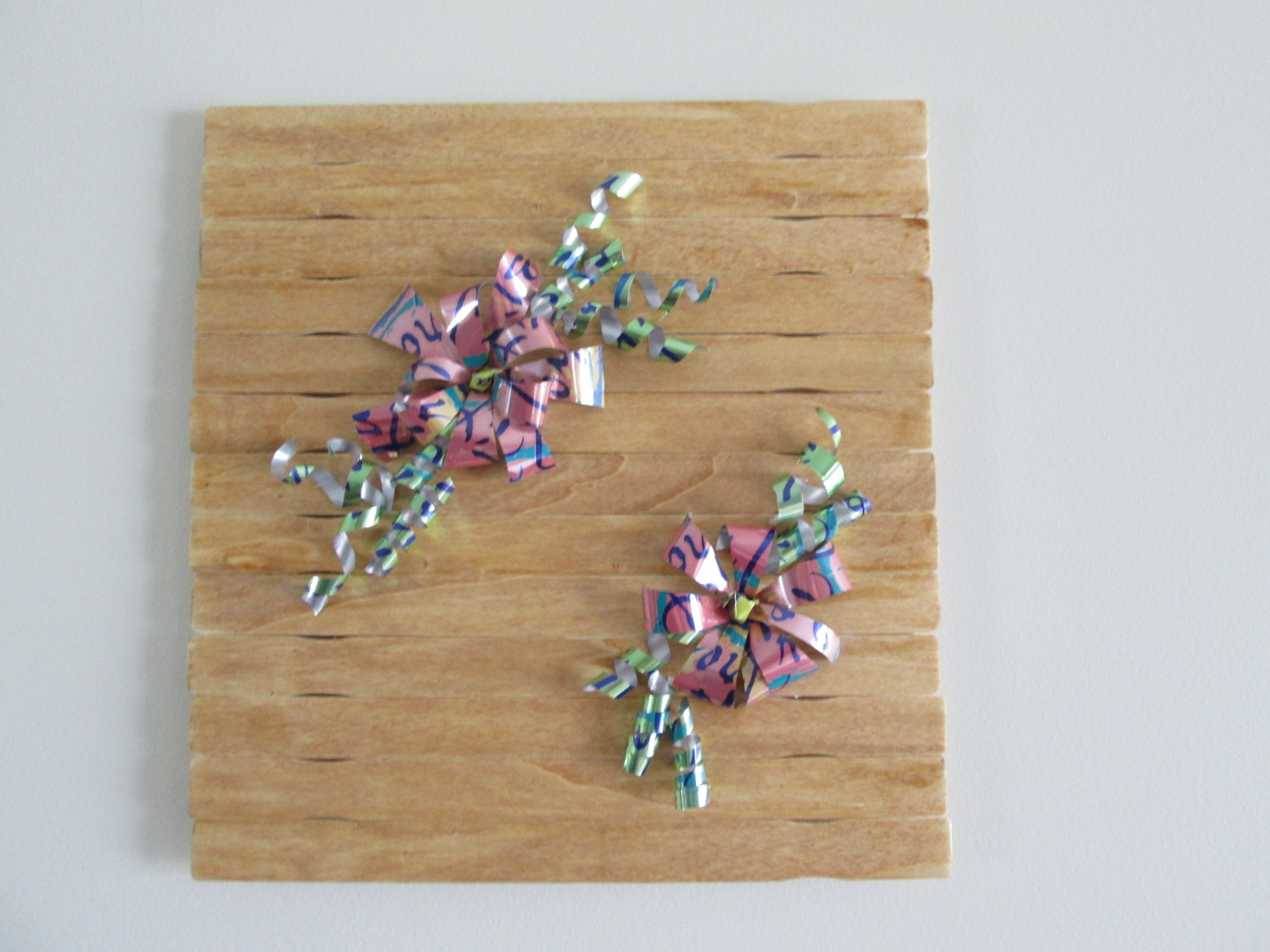
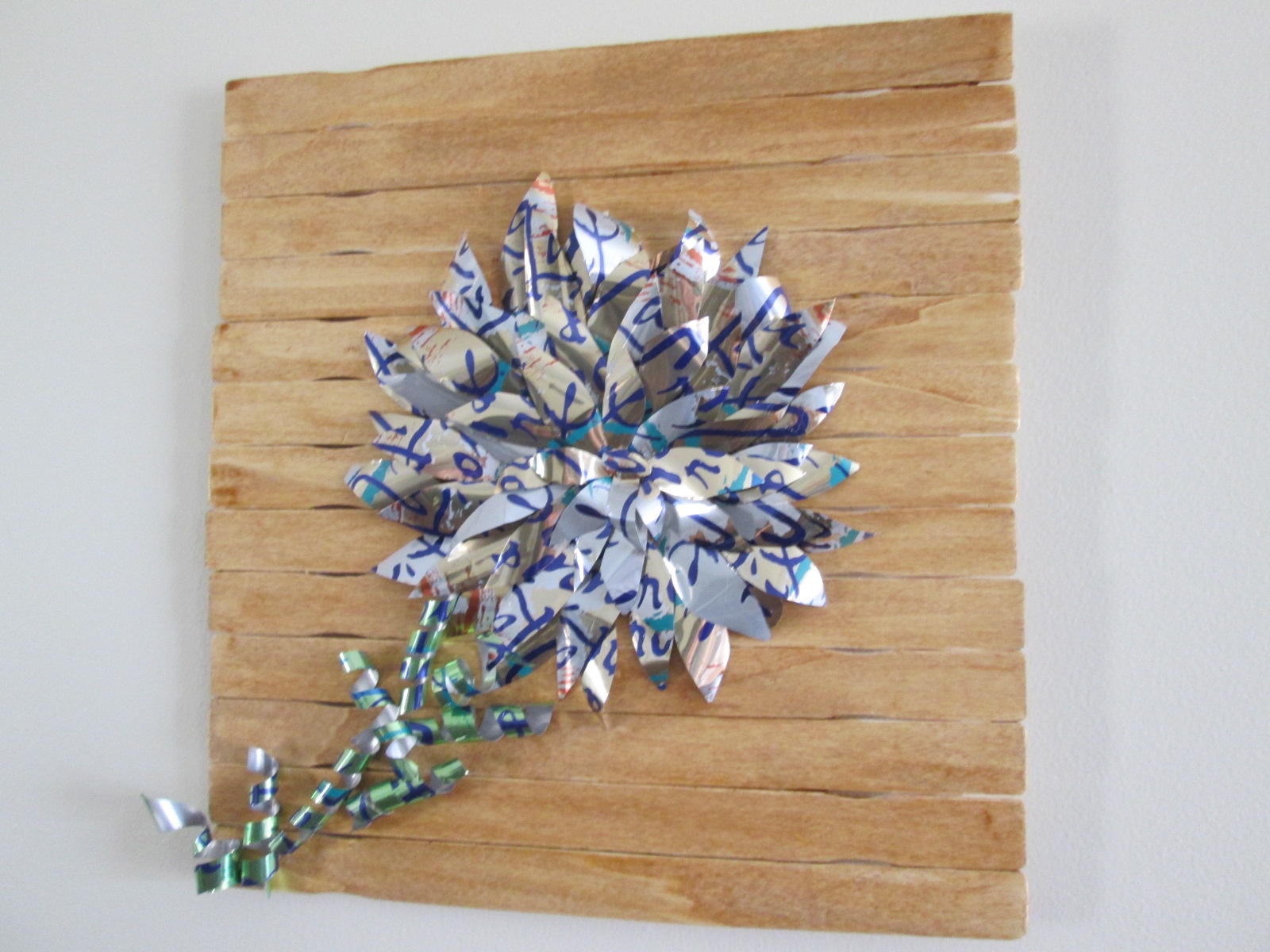
Welcome Inventors! The weather is warming up and we’re ready for fun times outside. After playing with paint sticks in my last post, I had an idea to make art out of them. But as I made the art, I thought: these could be cool placemats. And now they are both.
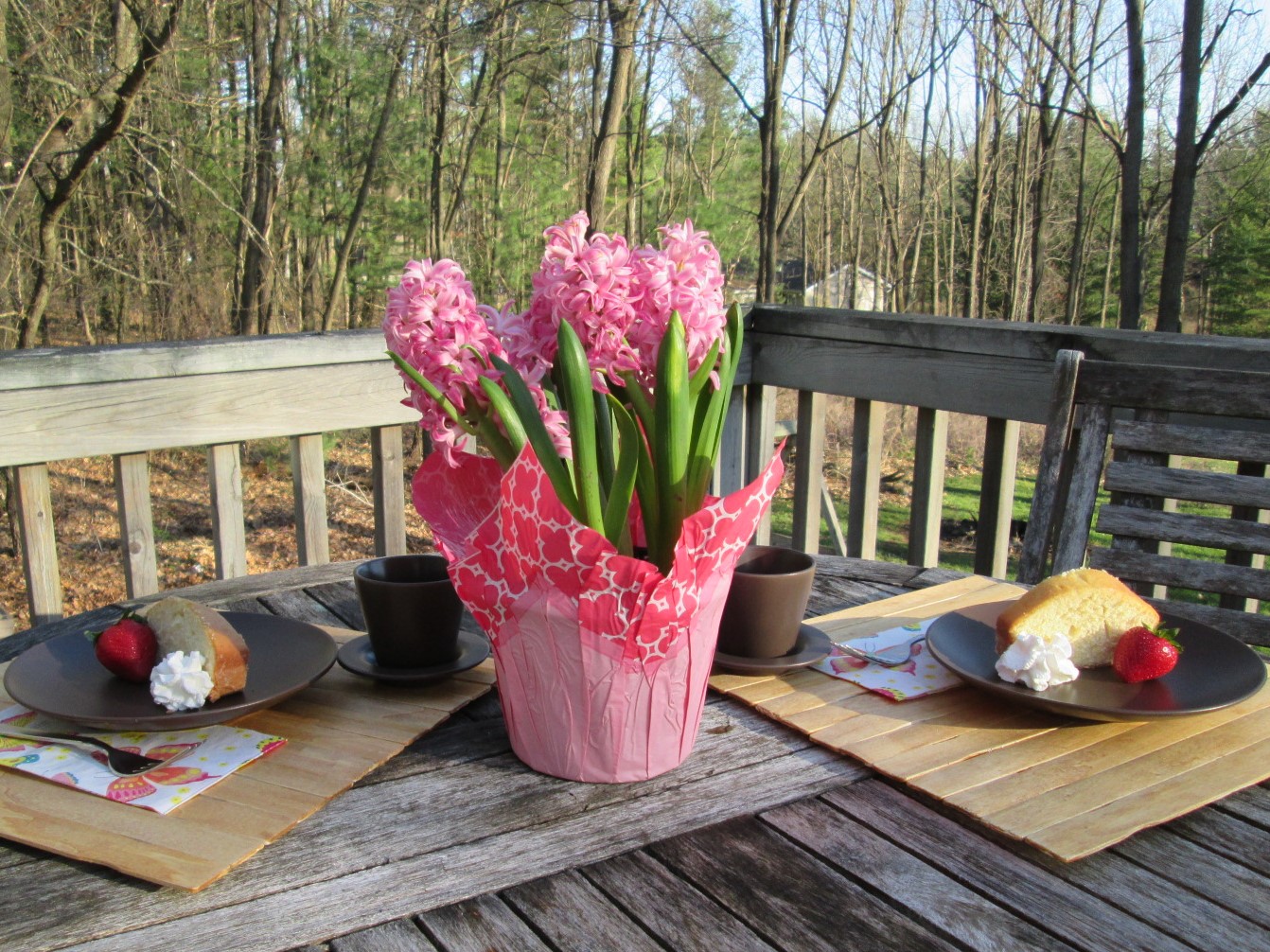
This is not inherently a kid’s project, but kids could easily help make the placemats. If your kids are too young to use a hot glue gun, they could decorate/paint/handprint them after they’re done. Or you can invent something new to share! ????
All you need for this project are 15 paint sticks, hot glue, and wood stain. It’s literally a 3-material project for pennies if you have leftover stain and hot (or regular) glue. I used a lot of hot glue.
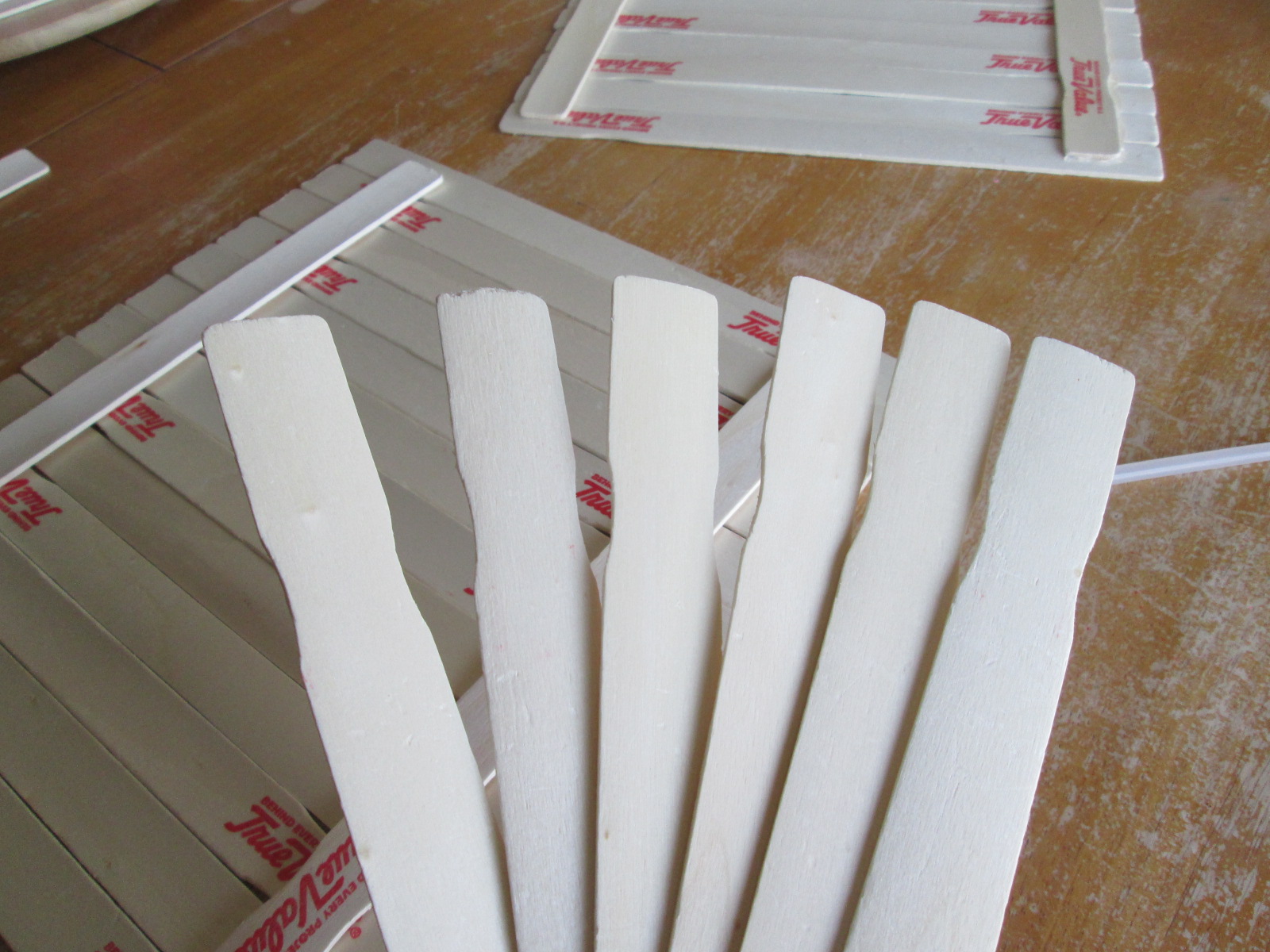
Step 1: Line up 13 paint sticks. Alternate the indented sides to create a kind of rustic pattern. If your paint sticks are printed on one side, make sure that side is facing the back.
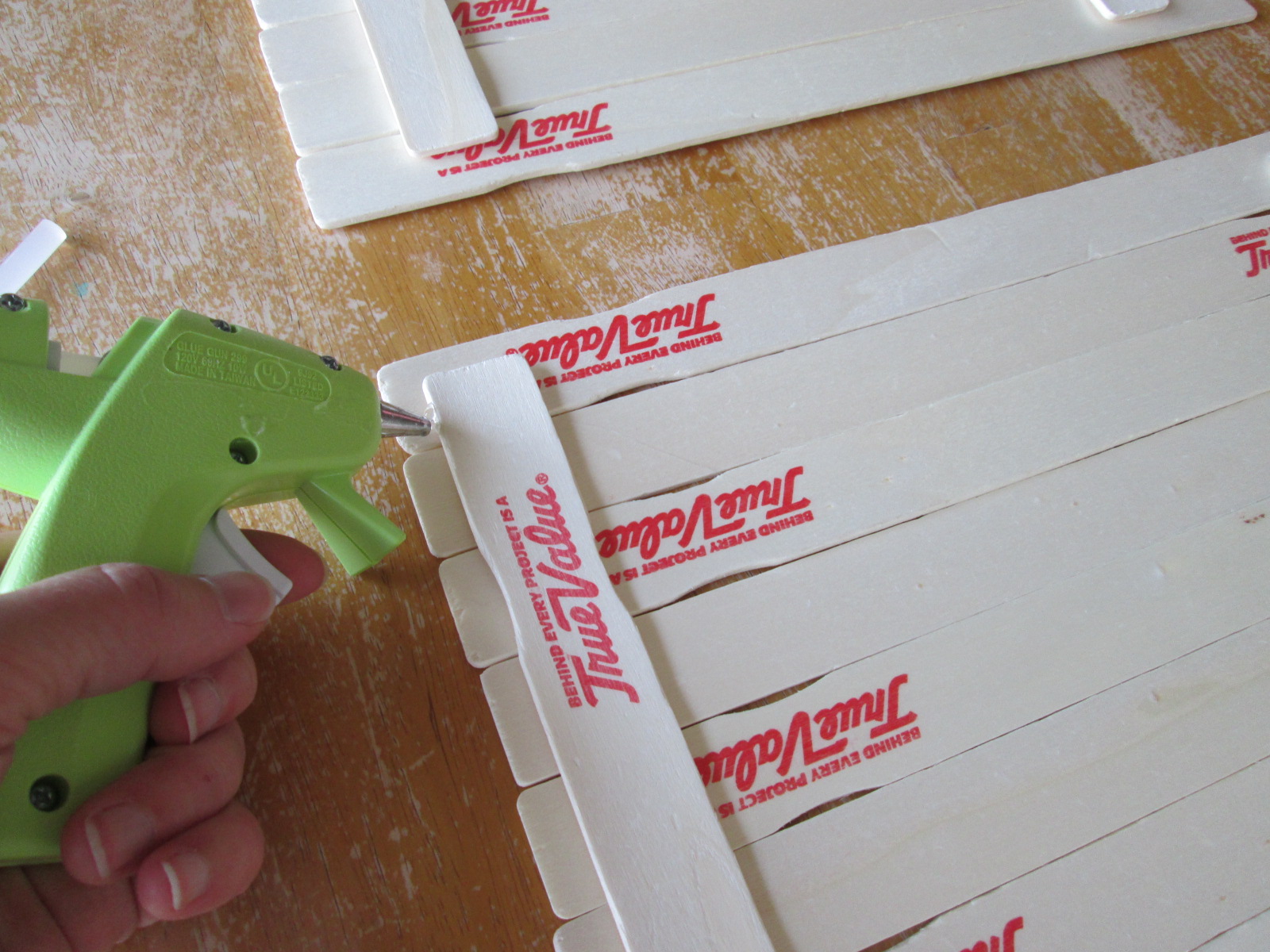
Step 2: Hot glue the 2 remaining sticks cross-wise to the back of the lined sticks. I put a strip of glue down across the lined sticks first, placed one cross-stick down, did the same to the other side with the second cross-stick, and then reinforced them with more hot glue along the top and sides.

Step 3: Stain or paint the top of your placemat. Boom! You’re done!
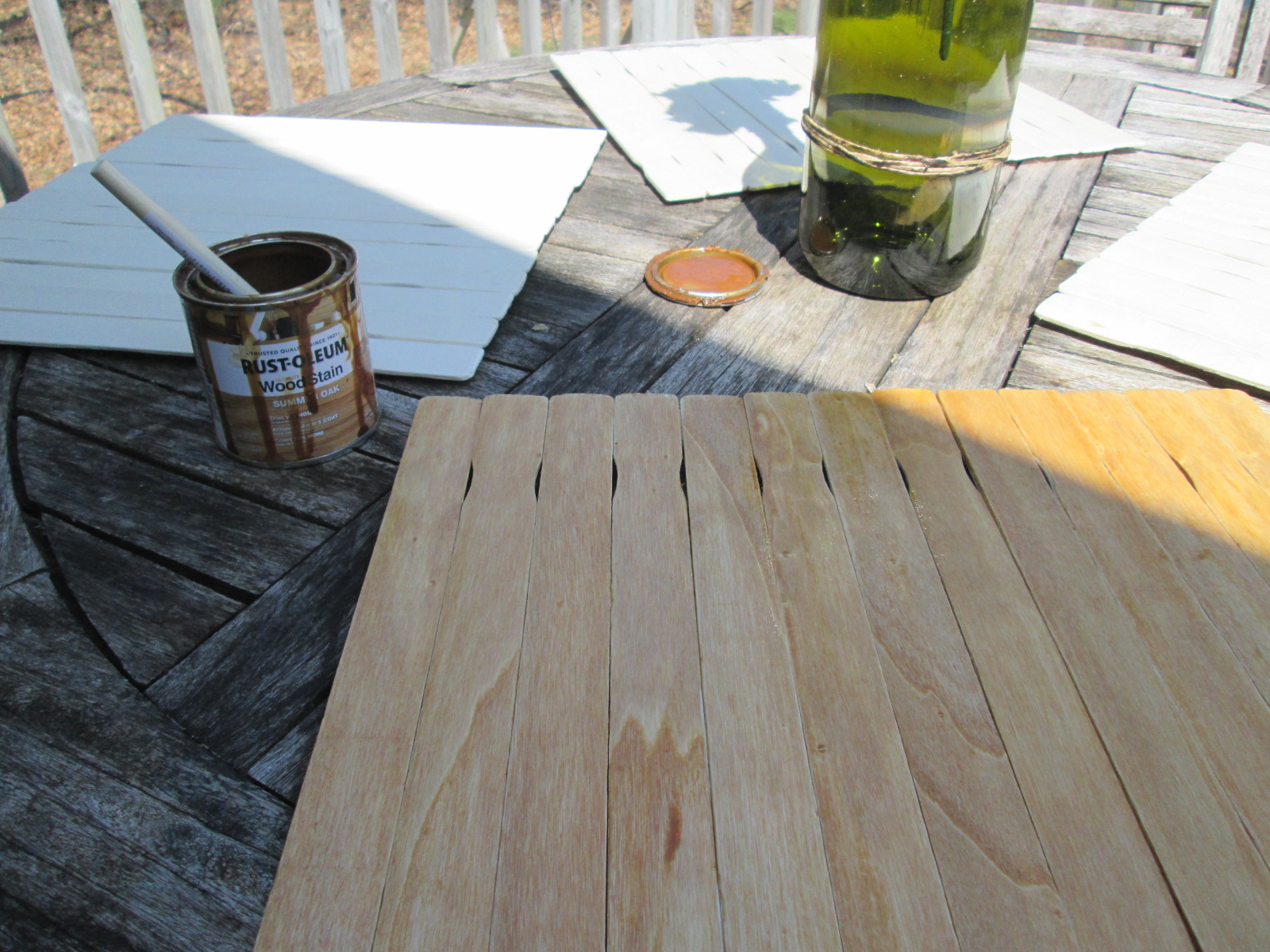
I hope you like this project and it spruces up your spring table. Just in case you are wondering, I did stage our deck table with two desserts (above) and then ate them both for breakfast. See, this blog helps everyone!
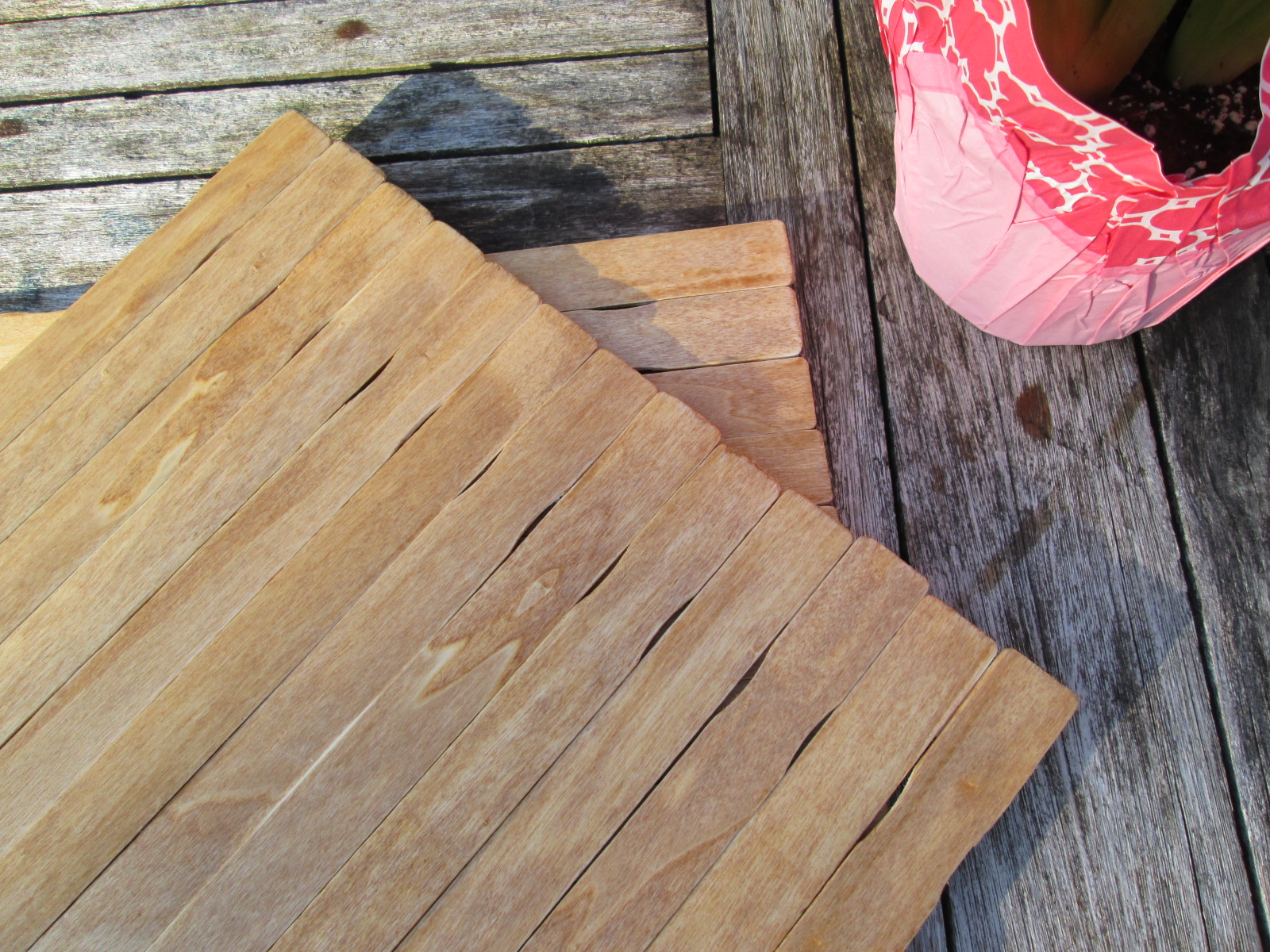
Also, if you’re curious about the art I was going to make before I got sidetracked with the placemats, check out my last picture. I’ll write more about that next time. Until then, enjoy your day and go invent your story!

Welcome inventors! This past week was spring break, and to celebrate I bought a box of springs. After brainstorming with my kids, we created our own spring-action race car launchers and gate. Check it out!
Here’s how we did it: First, we gathered all of the same size springs together. You could experiment with different strengths and sizes of springs, but in the spirit of good sportsmanship, we opted to keep them the same for racing. We used these materials and painter’s tape.
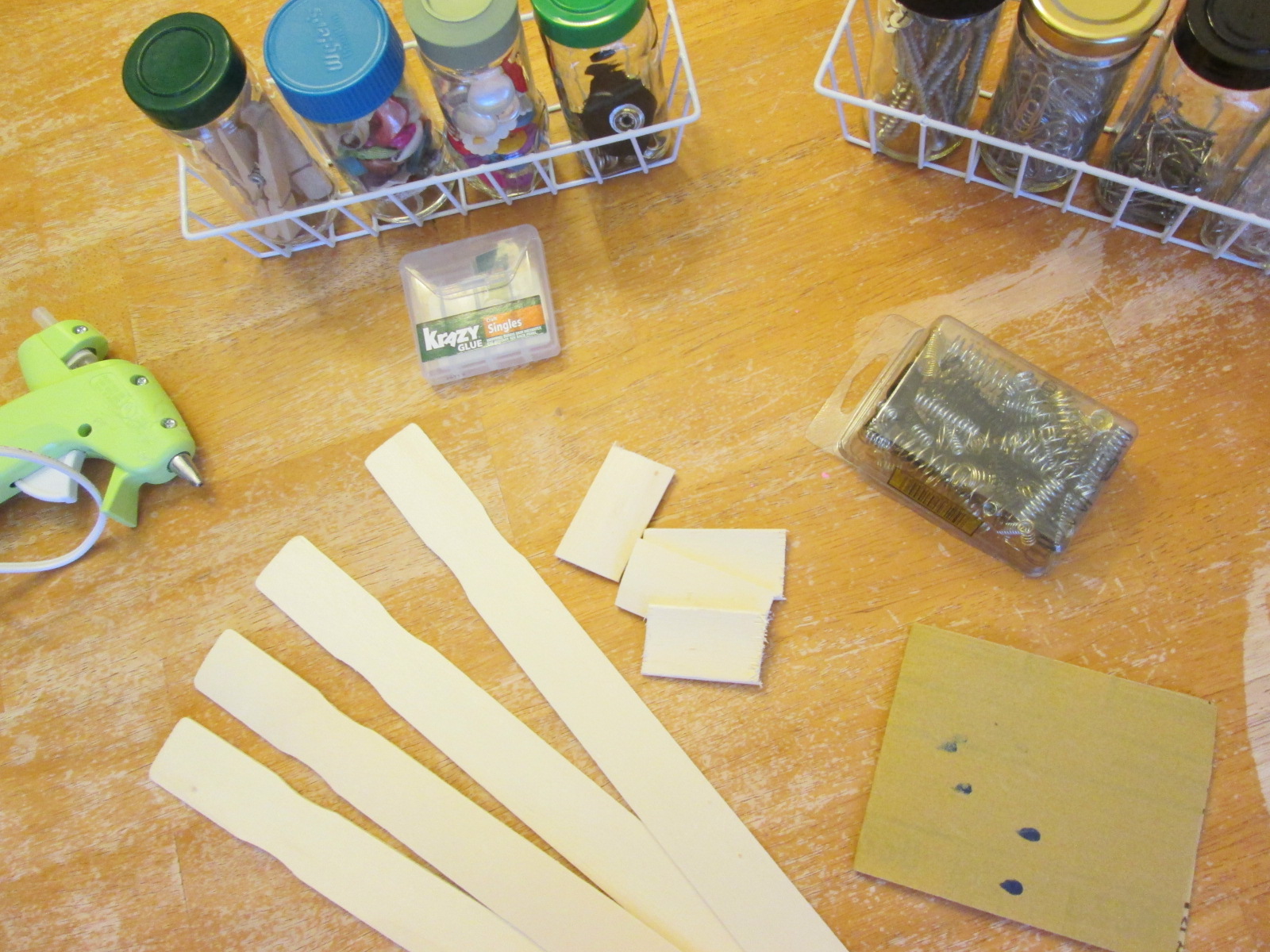
To make the launchers, we cut a paint stick into small pieces and sanded the edges. Then we super-glued (and doubled security with hot glue) the springs onto the back of our paint stick pieces. Launchers!
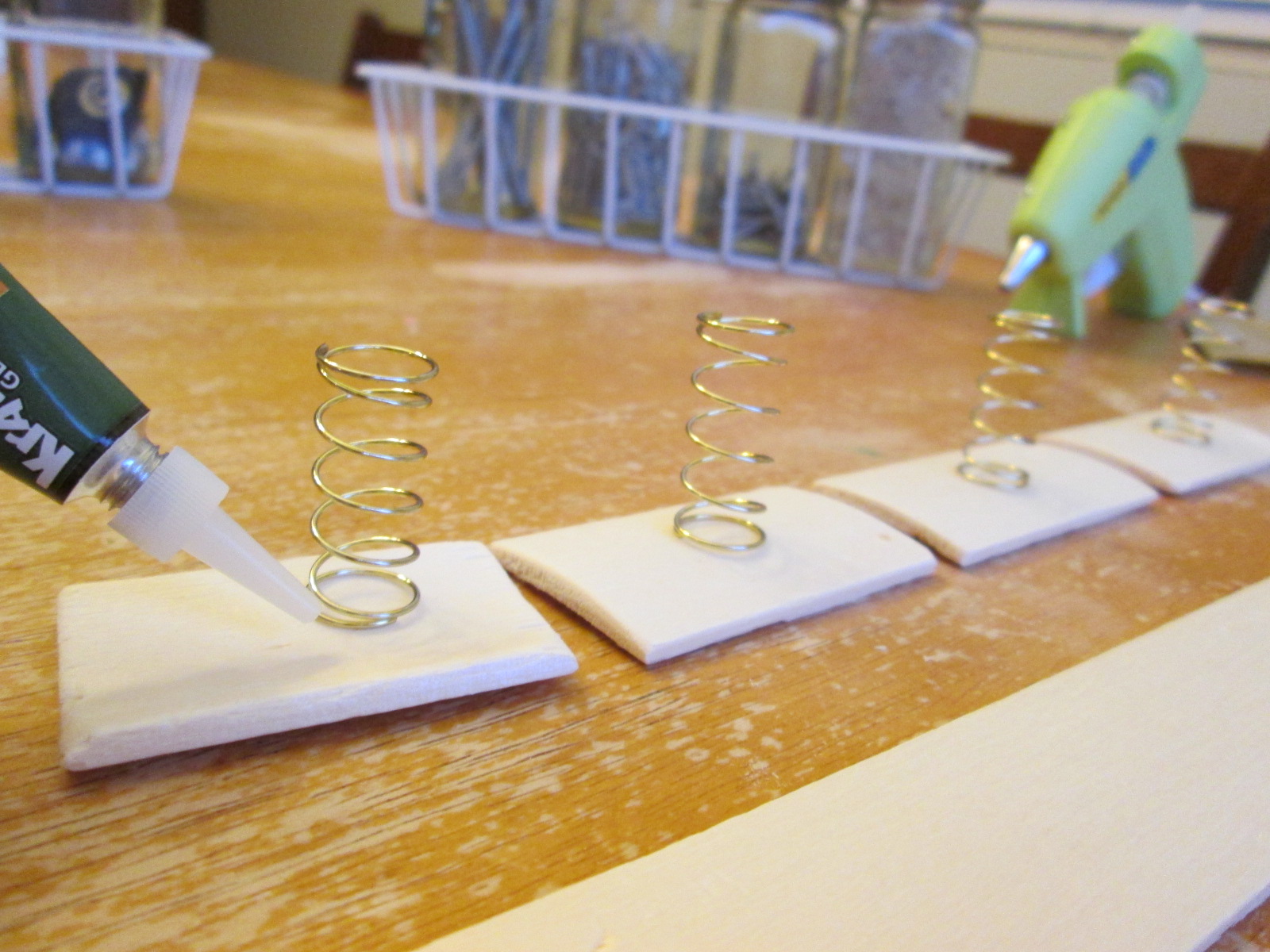
After that, we needed our starting gate. We ran out of hot glue, so we used painter’s tape to frame the sticks into stalls. This wasn’t hard, but the sticks moved quite easily.

The ends of the stalls were floppy, so we secured two screws together that faced opposite directions to the end of the starting gate to keep them equally separate. This is shown in the video at the end. We also taped the outside walls to our table.
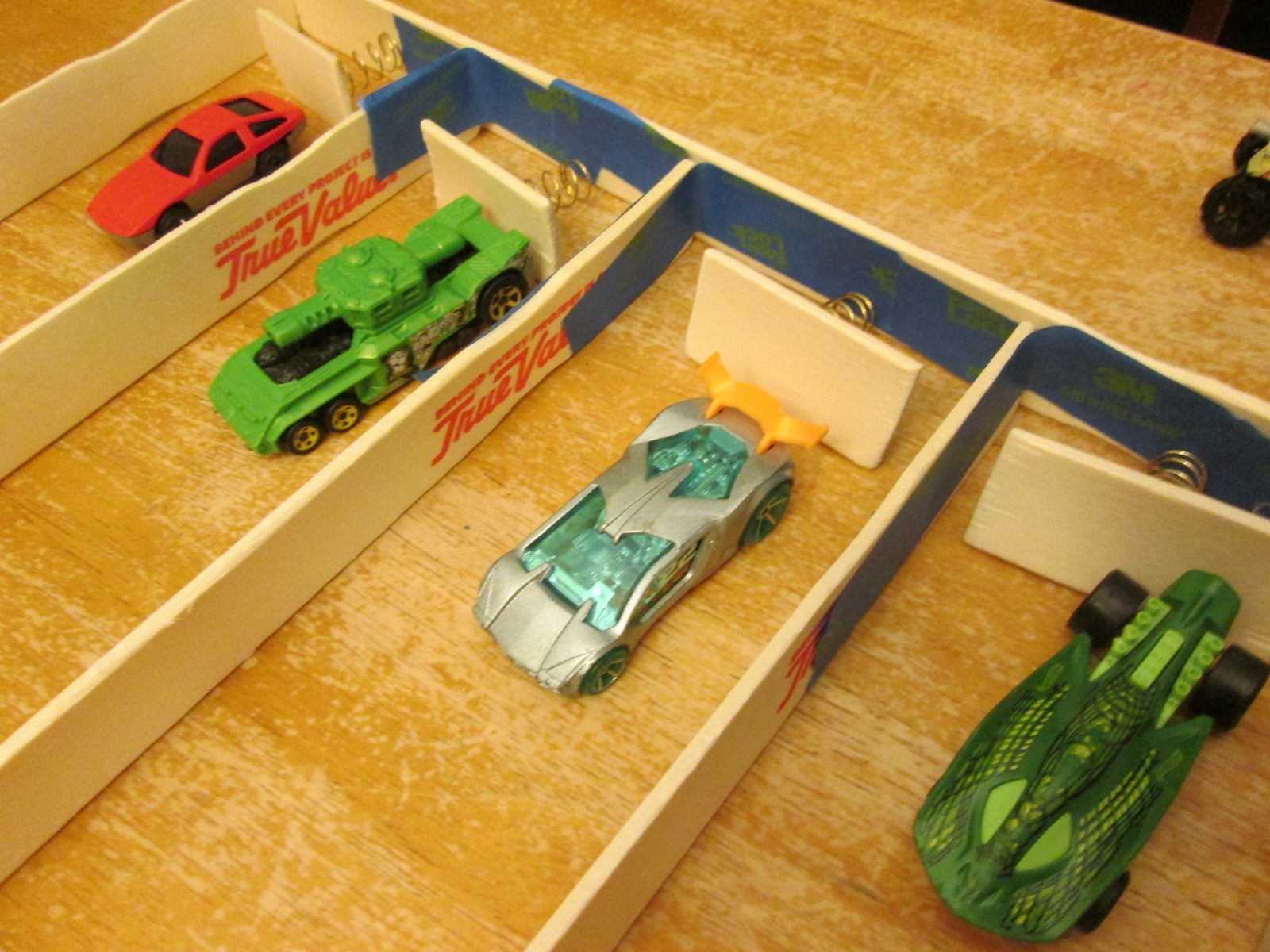
Ready, set, launch! For our race, we used more painter’s tape to create a finish line for the winners. We also experimented with some interference for our race cars to navigate. My son made a display for our winning cars.
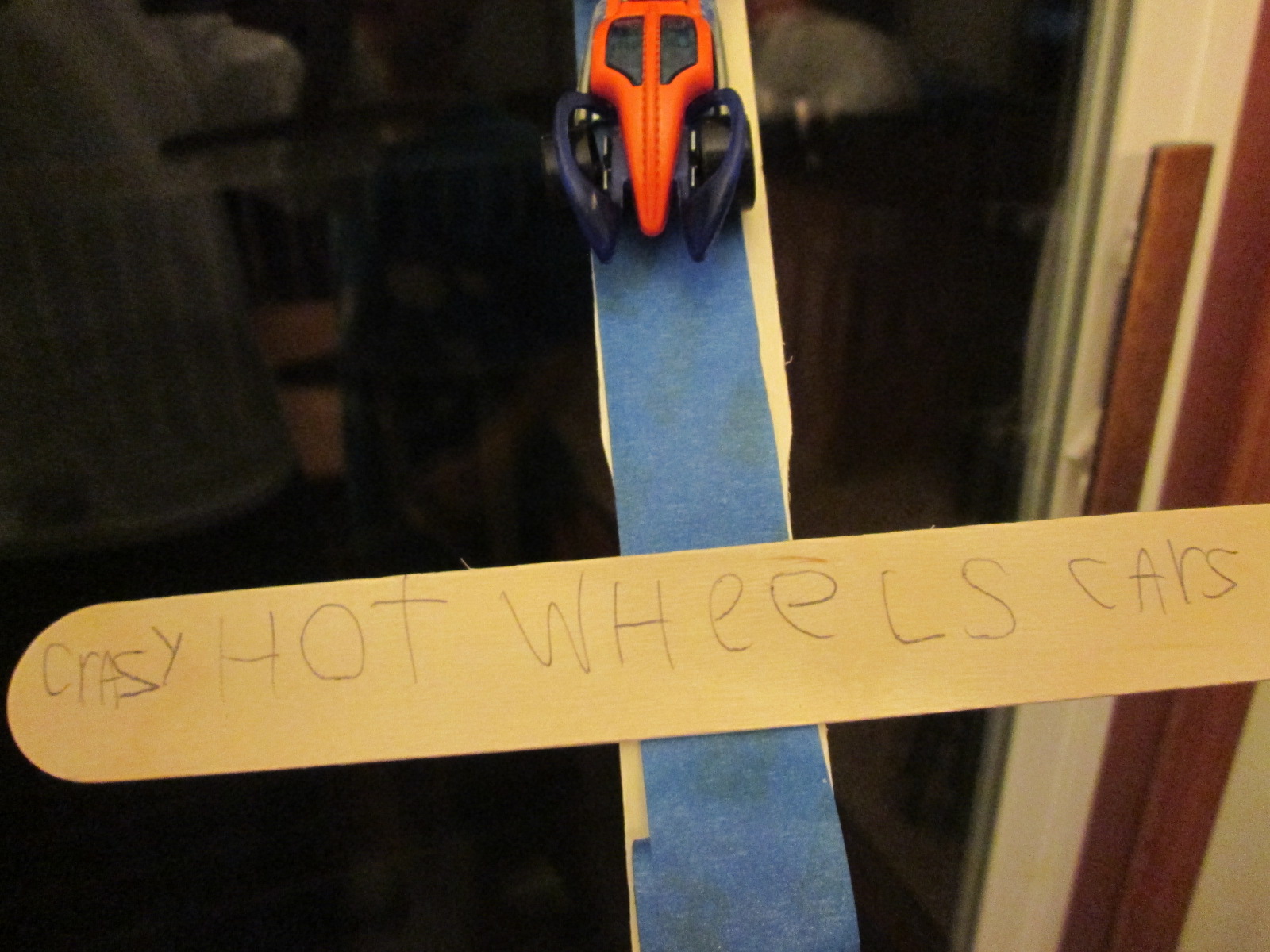
I think it turned out pretty well! Here’s our big race. Give it a try and see what you think. And whatever you do this spring, don’t forget to enjoy life and invent your story.
[wpvideo qbuoza9t]
Welcome Inventors! Today I am taking a break from inventing to get organized. Messes are more fun – at least that’s my motto. Look at the pic of my first blog about inclined planes if you don’t believe me! That mess was not part of the project – it’s just how we roll some days.
If you are like me, you may not be known for organization – but you can appreciate the value of knowing where things are and where they go. This saves you time, and time is valuable. Let’s invent some space!
- START SMALL: If you’ve ever bought office supplies, hardware or craft materials (very useful for inventors) you get hundreds of little pieces. And that’s nice – except what do you do with the 99 pieces you don’t need for your current project? Get that stuff together, and take a deep breath.
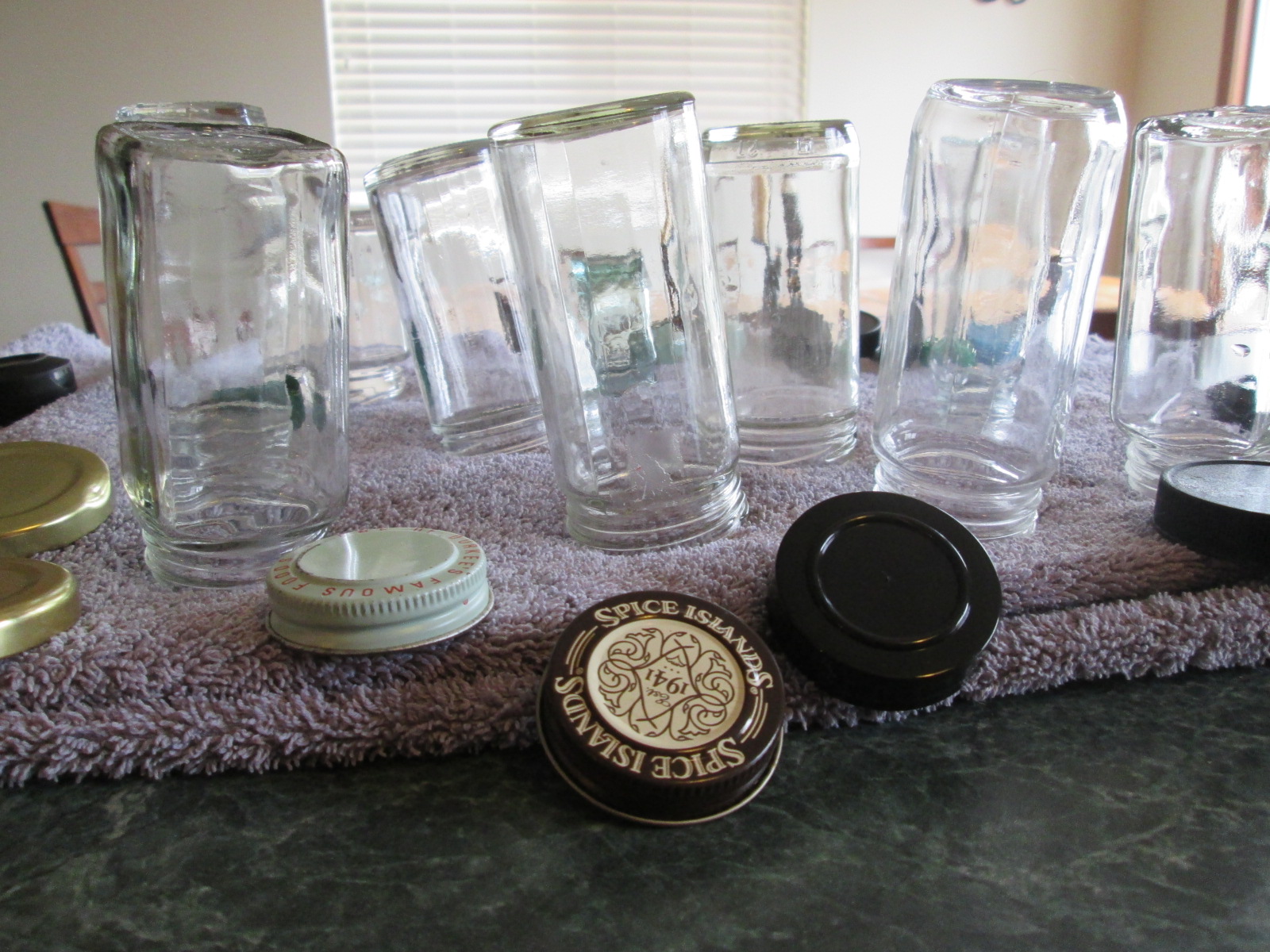
Once you’ve collected your little things, the next step is putting them into containers.
- IT DOESN’T MATTER WHAT YOU PUT IT IN: That’s right. You don’t need to take a special trip to the store. You can, but why not re-use old containers? This weekend my mom and I went through some spices to see what was still good – and it turned out many of them had been expired for years.
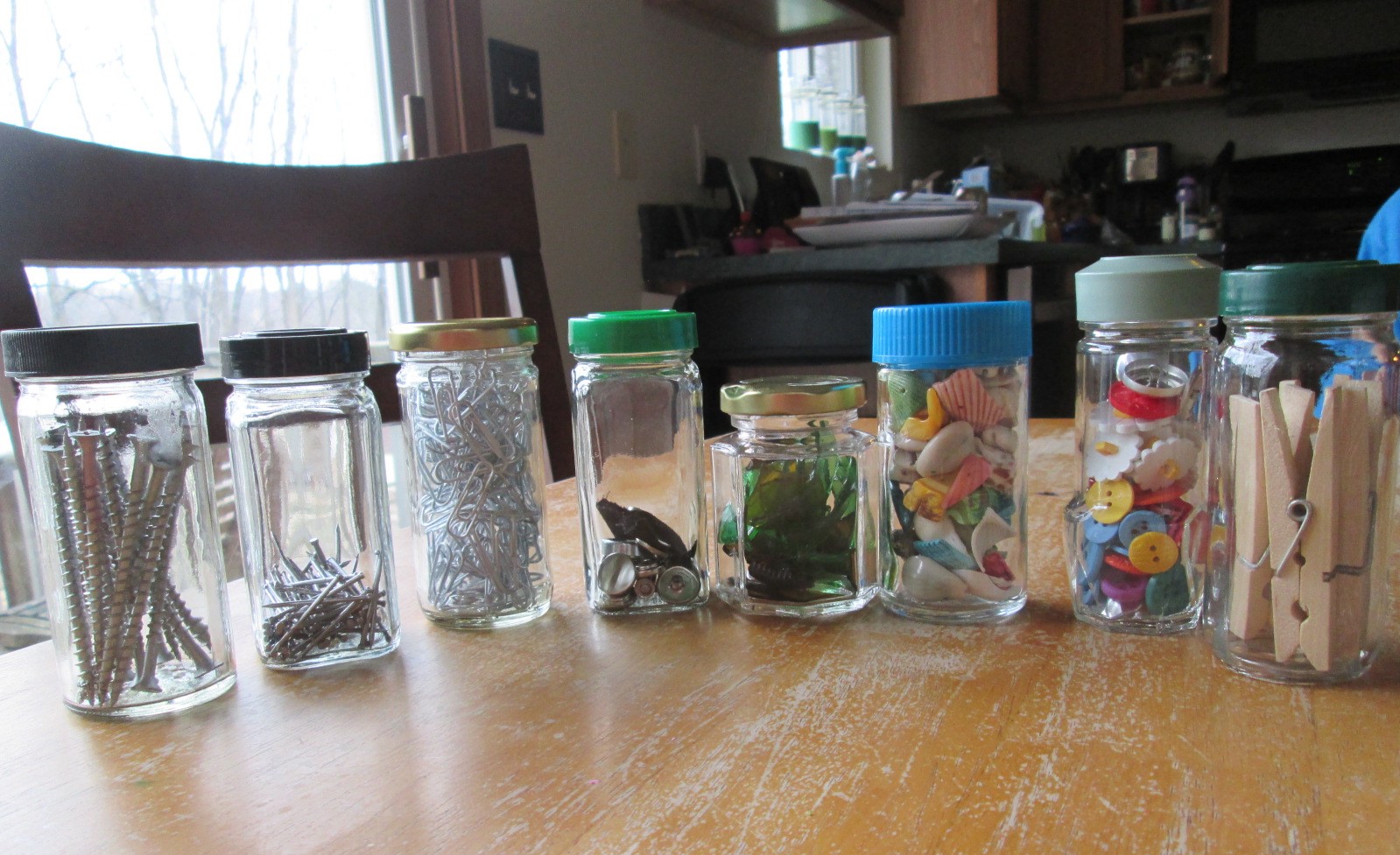
I dumped out the spices and let the containers soak in a sink of hot water, dish soap, and baking powder. Most of the labels came off easily after the bath. I set them out to dry on a towel.
- KEEP THINGS TOGETHER: After I filled my spice jars with my little pieces, I put them in wire containers. This is completely unnecessary, but grouping your supplies together and keeping them in the same place will save you frustration later. You might even call it an Inventor’s Workshop.
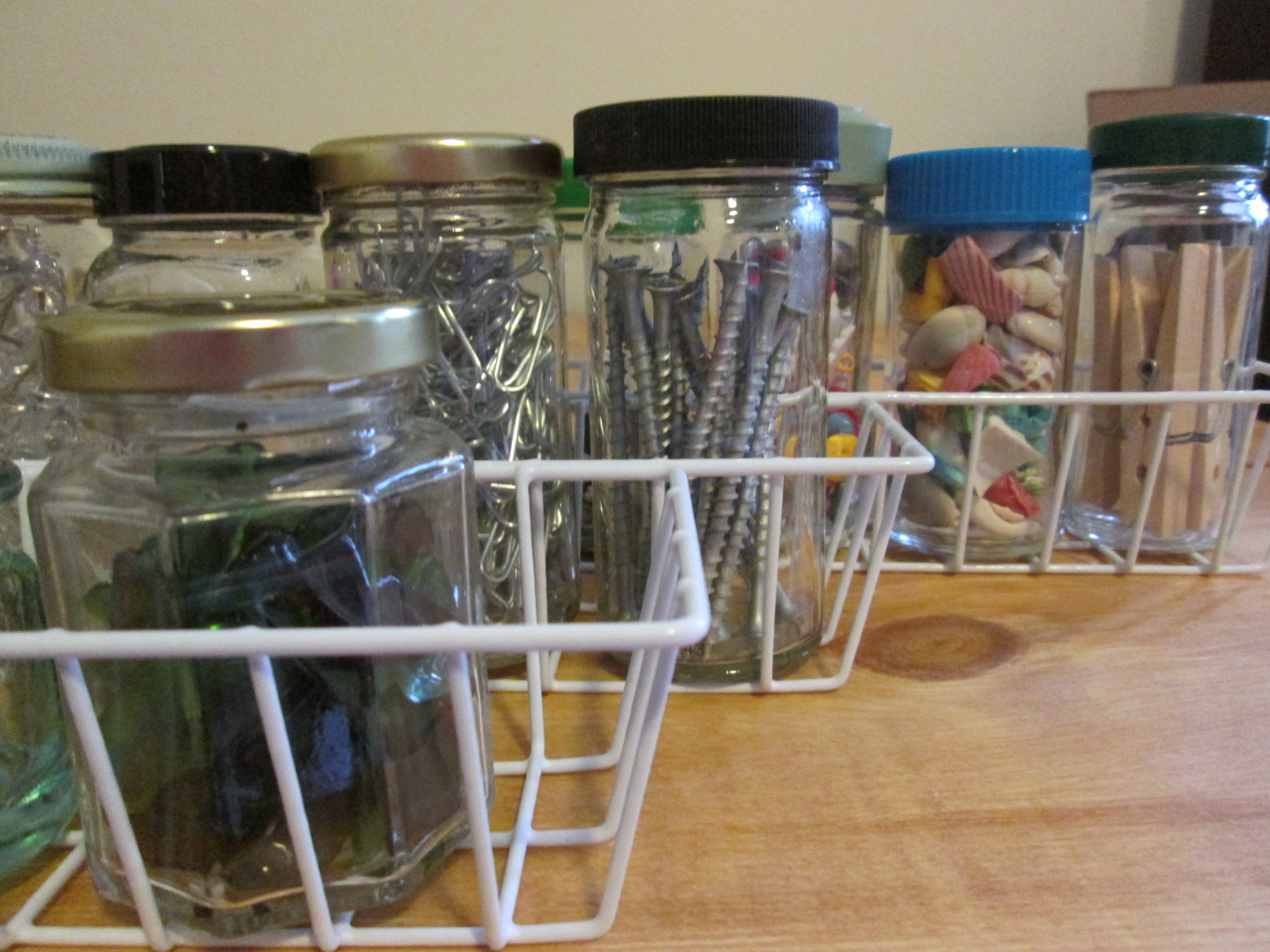
There you go! You’re on your way to your own inventor’s workshop. This is probably the world’s smallest workshop, but I have no doubt that this baby is gonna grow. After all, we’ve only just begun.
Let me know how this was helpful for you. Thank you for visiting my site, now go! ???? Enjoy your day and invent your story.
Welcome Inventors! I’ve always been interested in language. When I was in elementary school, my friends and I formed a club and made a secret language just for us. No teachers were going to understand any notes we passed!
Step 1: Knowledge – what is a code? A code is a system of rules used to turn information (such as letters, sounds, images, etc.) into another form of representation for communication.
Step 2: Simple Application – a wonderful example of code is International Morse code. Almost anyone could recognize this picture and be able to understand the message.
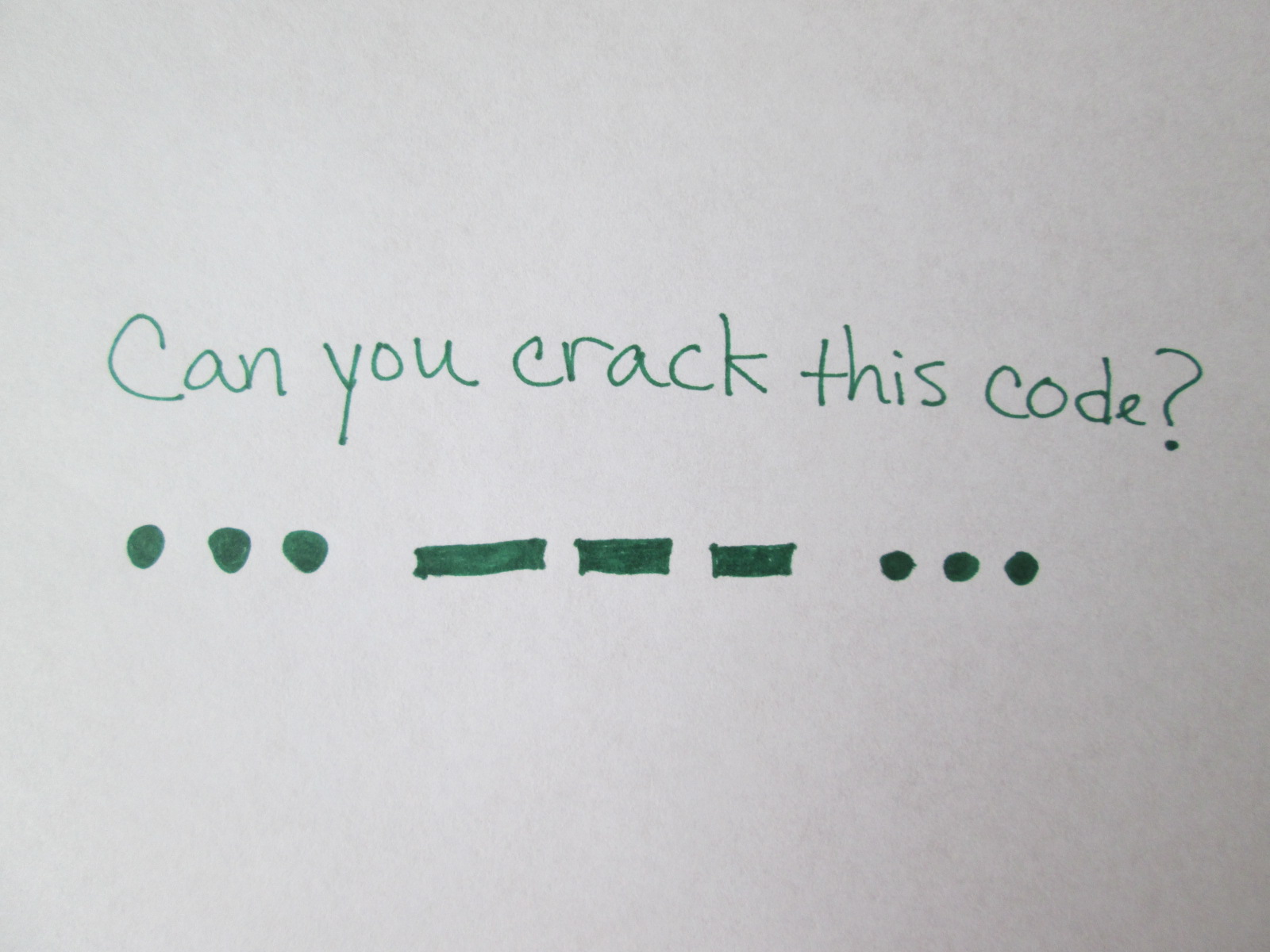
S=••• O= – – – SOS is essentially “help!” in International Morse code. This is a useful tool in a world full of different languages! If you are interested, click here for some great information on the history of Morse code.
Step 3: Level up – To make our own code today, we need a system of rules and information. I’m going to use letters because I like to make words. Here is the “key” to my code before I begin:
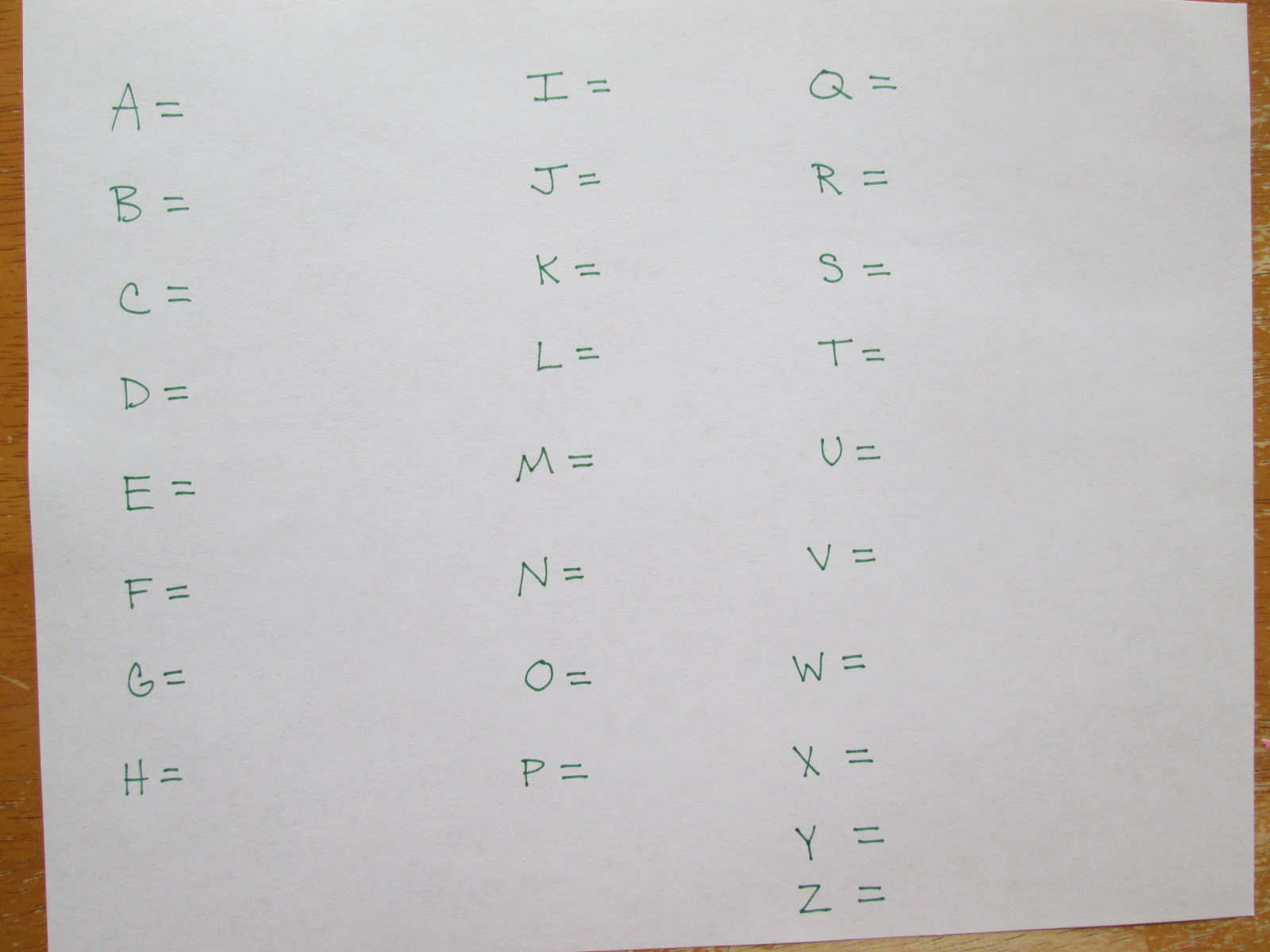
Step 4: Build It – to create your code, make a few designs on a piece of paper. If you want to copy mine you can, but try your own thing! I did find that simple shapes with small details worked well for me.
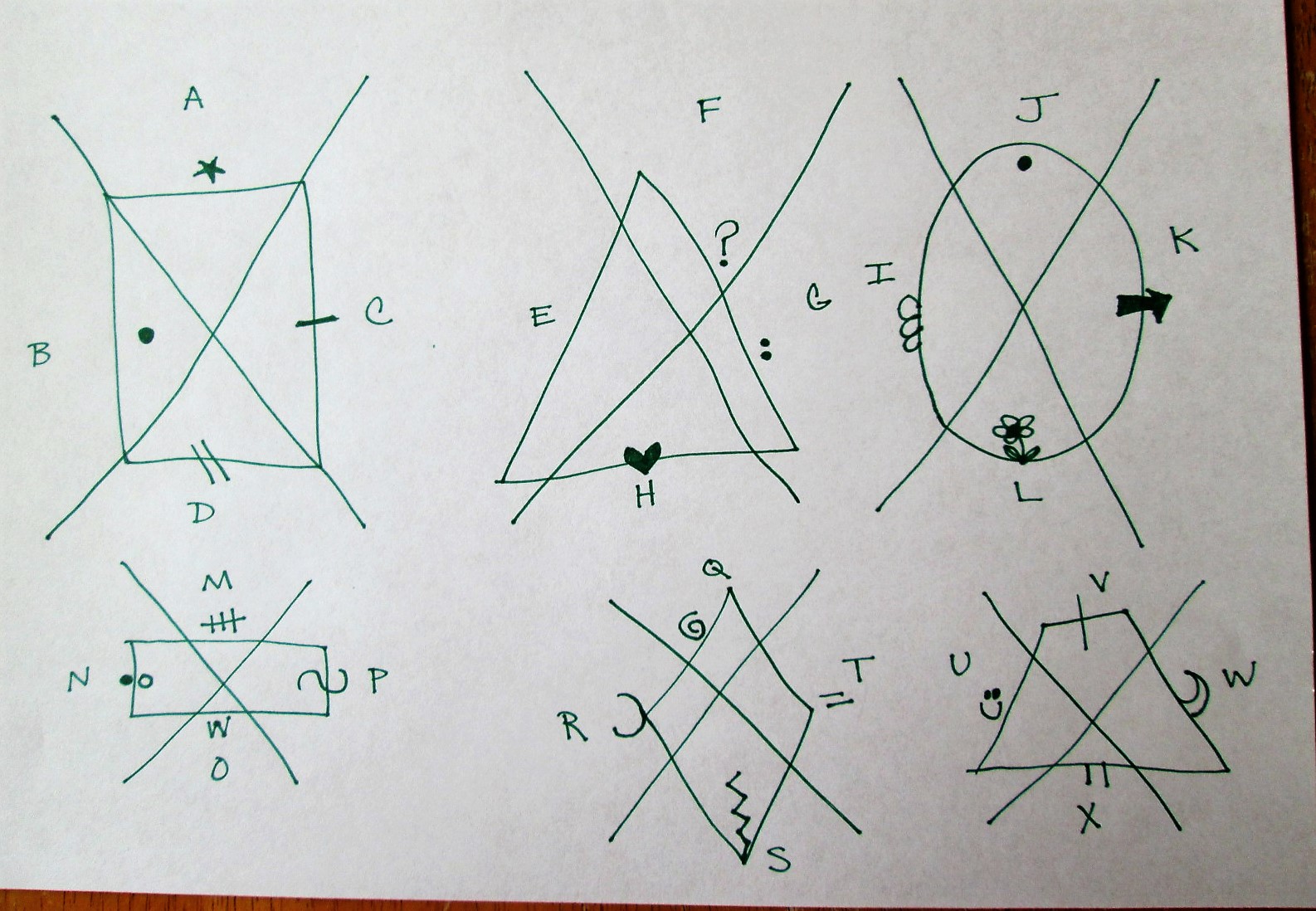
Step 5: Launch – To turn your design into code, place X’s over your designs. You could also divide them into quadrants with + signs or squiggle off your favorite parts. This gives you the pieces of your code. Once you have what you like, add them to your key next to the letters, and BAM – you’ve invented your own secret code! (I made up Y and Z instead of drawing another shape – you do what you like!)
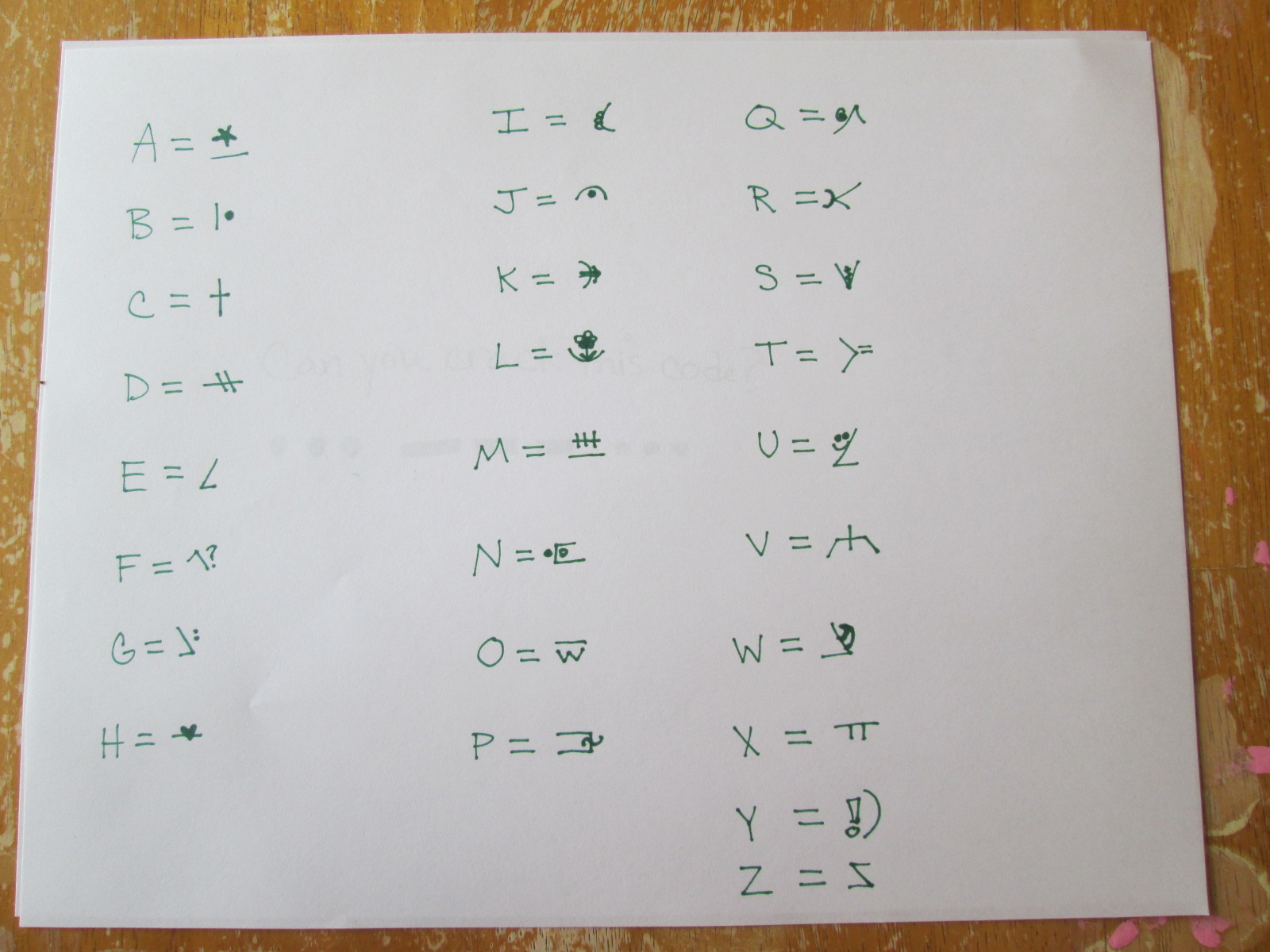
There you have it! Your own secret code to share with family and friends. Now that you know my code, I’ve got another challenge for you. Then go! Enjoy your day and…
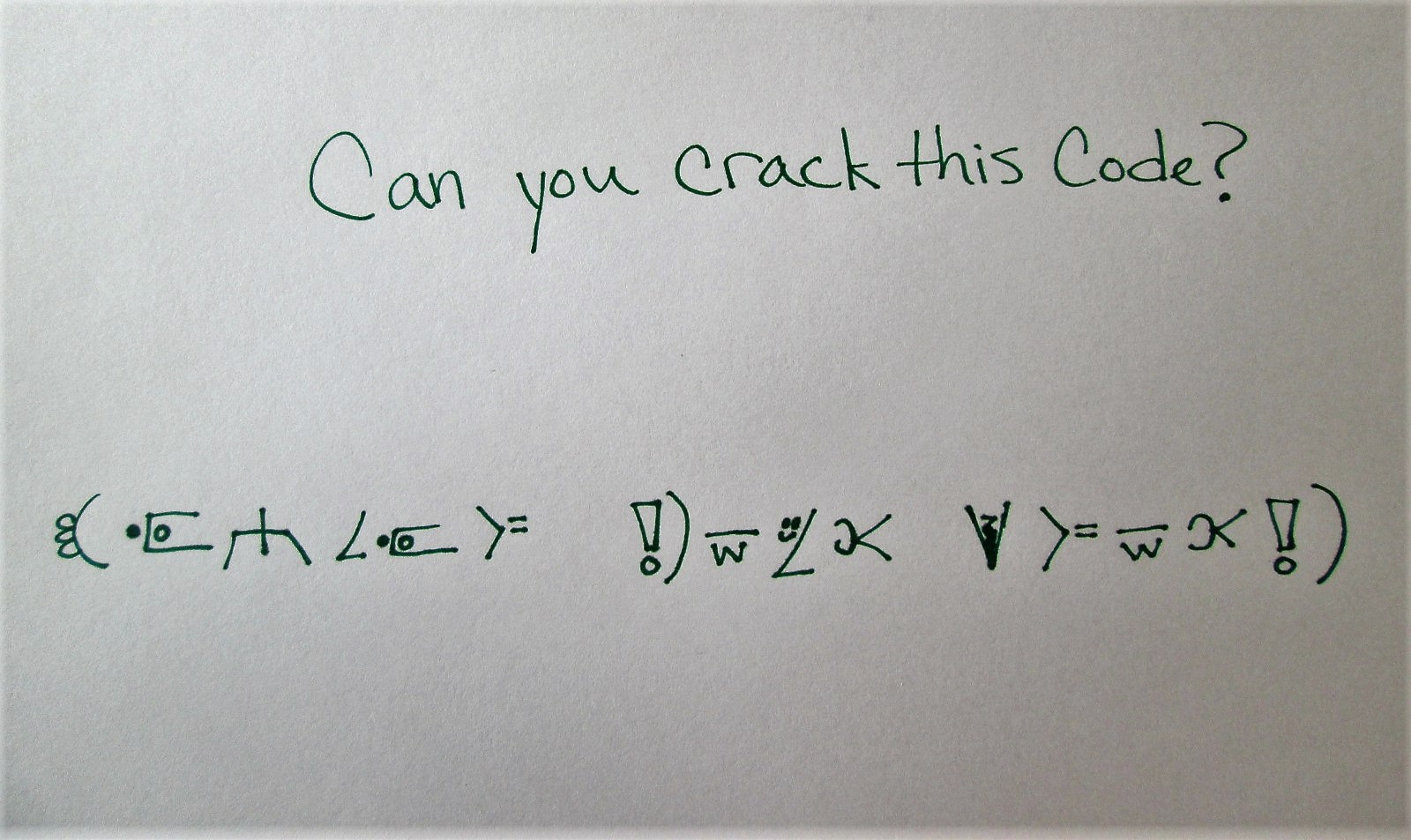
Welcome Inventors! I have a 10-year-old son who an origami enthusiast. Last week, he showed me a boredom buster box he made. You have got to try this!
If you are new to making origami, the box is a doable first project. Go slow and pause/replay the video as needed. This is a 5-step tutorial. Let’s get started.
STEP 1: KNOWLEDGE – what is origami? Origami is the Japanese art of folding paper into decorative shapes and figures. To make the box, you will need 6 pieces of square paper.
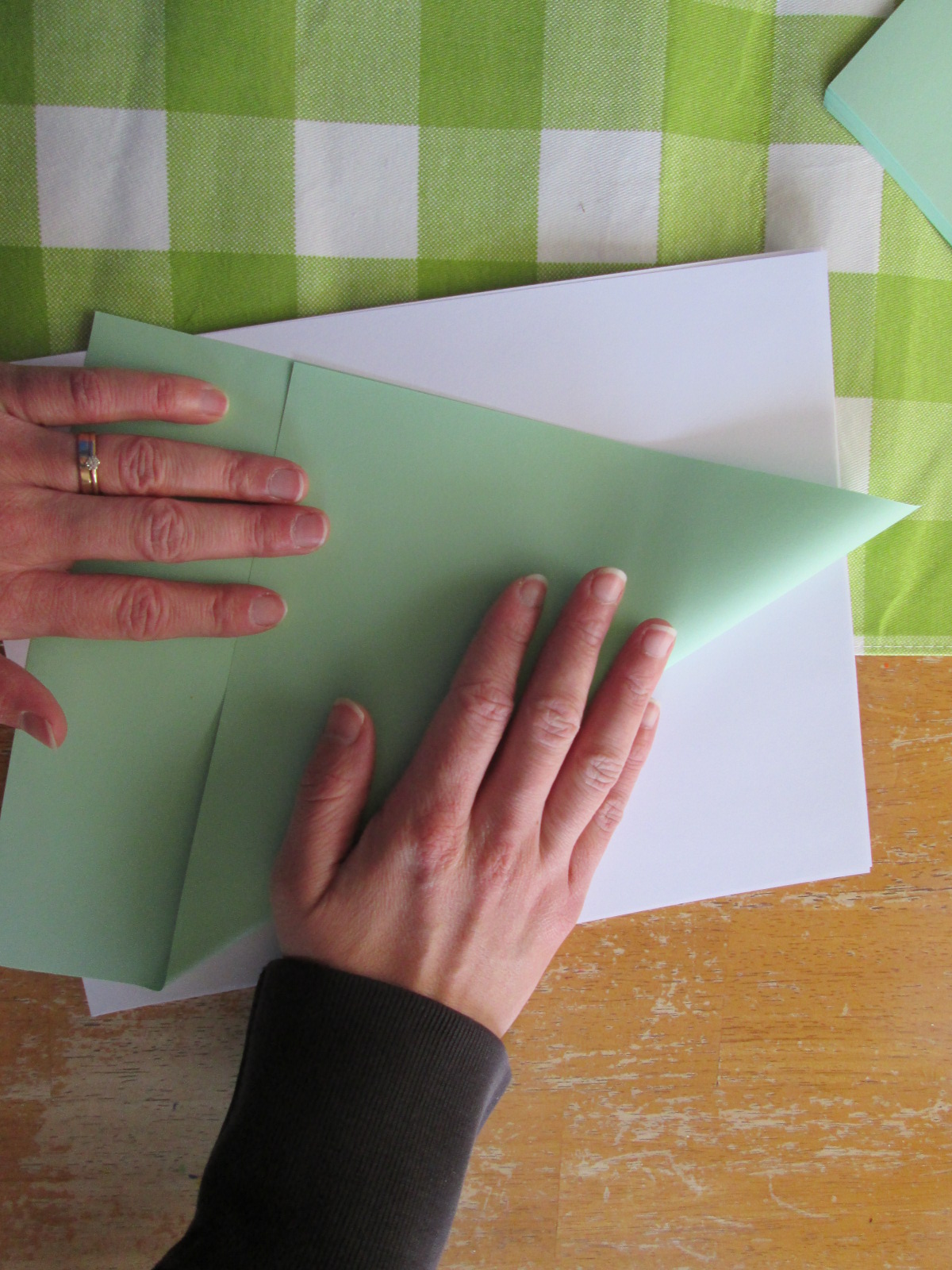
I squared my paper by folding a top triangle down of a standard size piece of paper (8 ½ x 11 – as shown) and I tore the extra off. You can also cut the paper into 8 ½ x 8 ½ inch squares.
STEP 2: SIMPLE APPLICATION – follow the steps of this link to make the box. This video was not made by me or my son and it is an excellent guide! When Ben and I watched the video, we had our six papers all set to go before we began, and it took us about 10 minutes.
This wonderful, 3-minute video by VENTUNOART shows how to make this box. Click HERE to watch the video. You can do it! When I was done, my box looked like this:
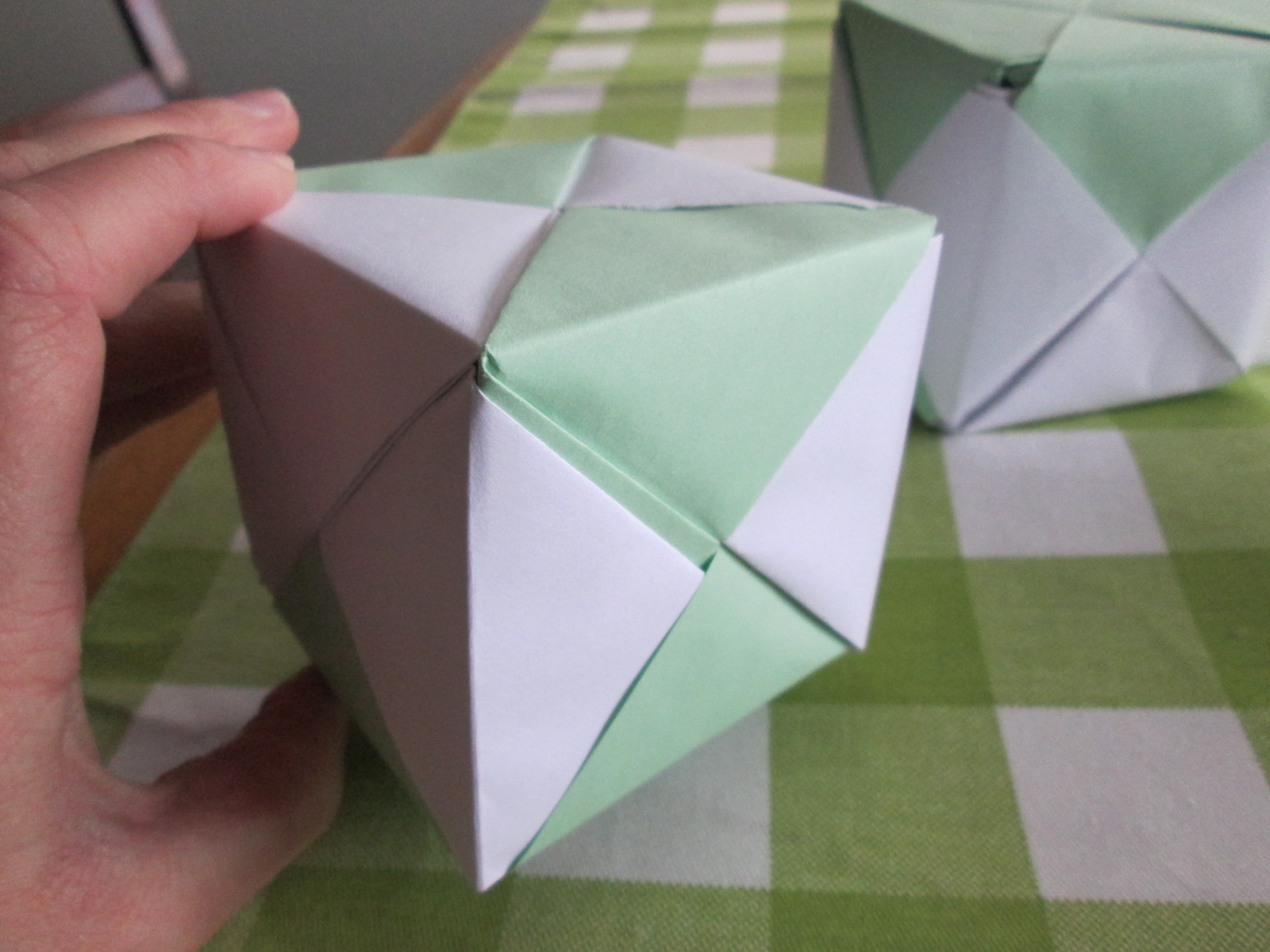
STEP 3: LEVEL-UP – I love learning new things, but what really jazzes me is learning something new and then finding a way to make it my own. Ben turned this work of art into a game by writing ideas of things to do when he is bored on the triangles on each side of the cube.
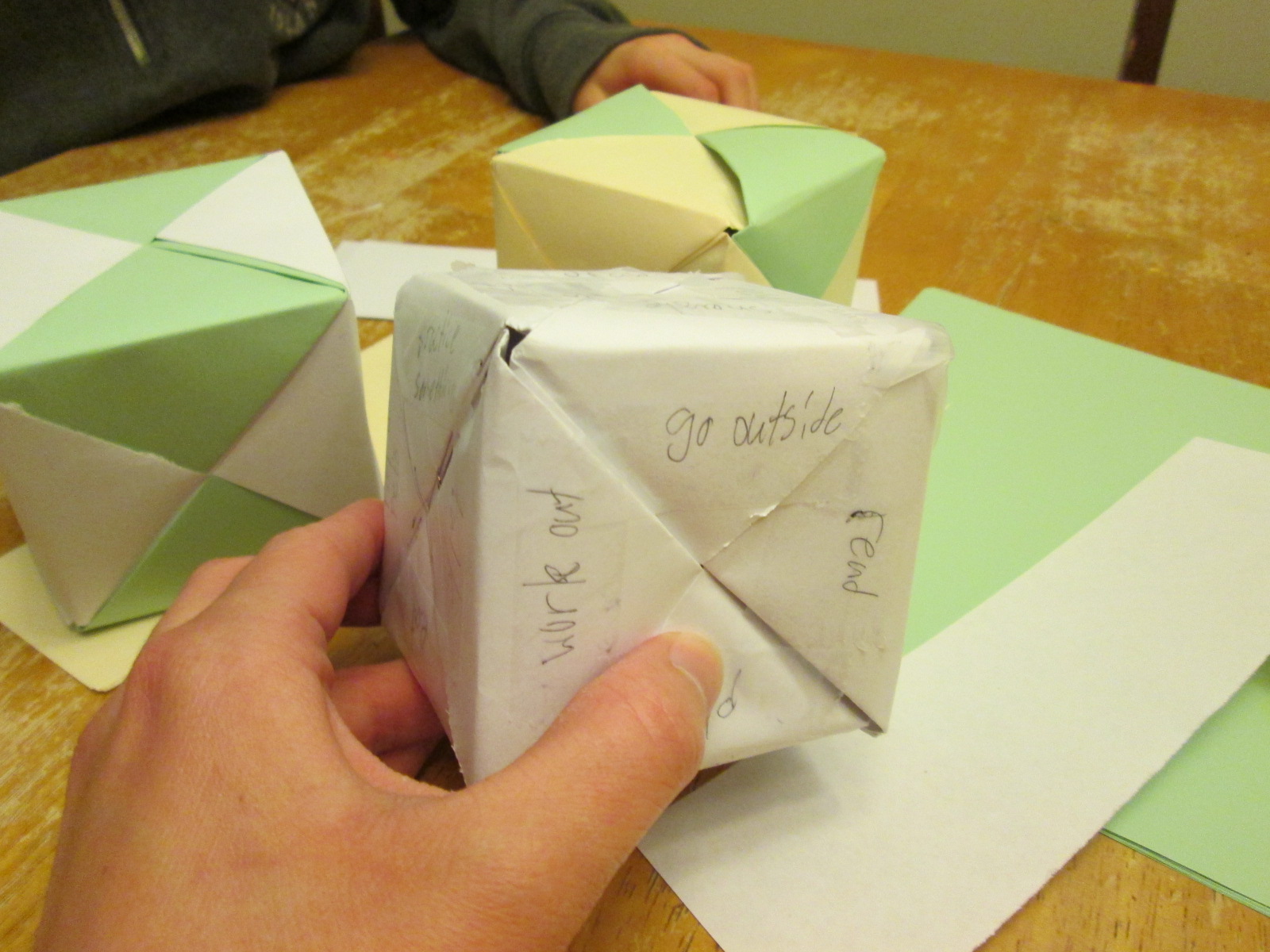
STEP 4: BUILD IT – We’d already built the box, but once we started throwing around the Boredom Buster Box, it was in danger of being destroyed by use. To protect it, Ben put clear tape on the edges to protect and strengthen it. This made a huge difference!
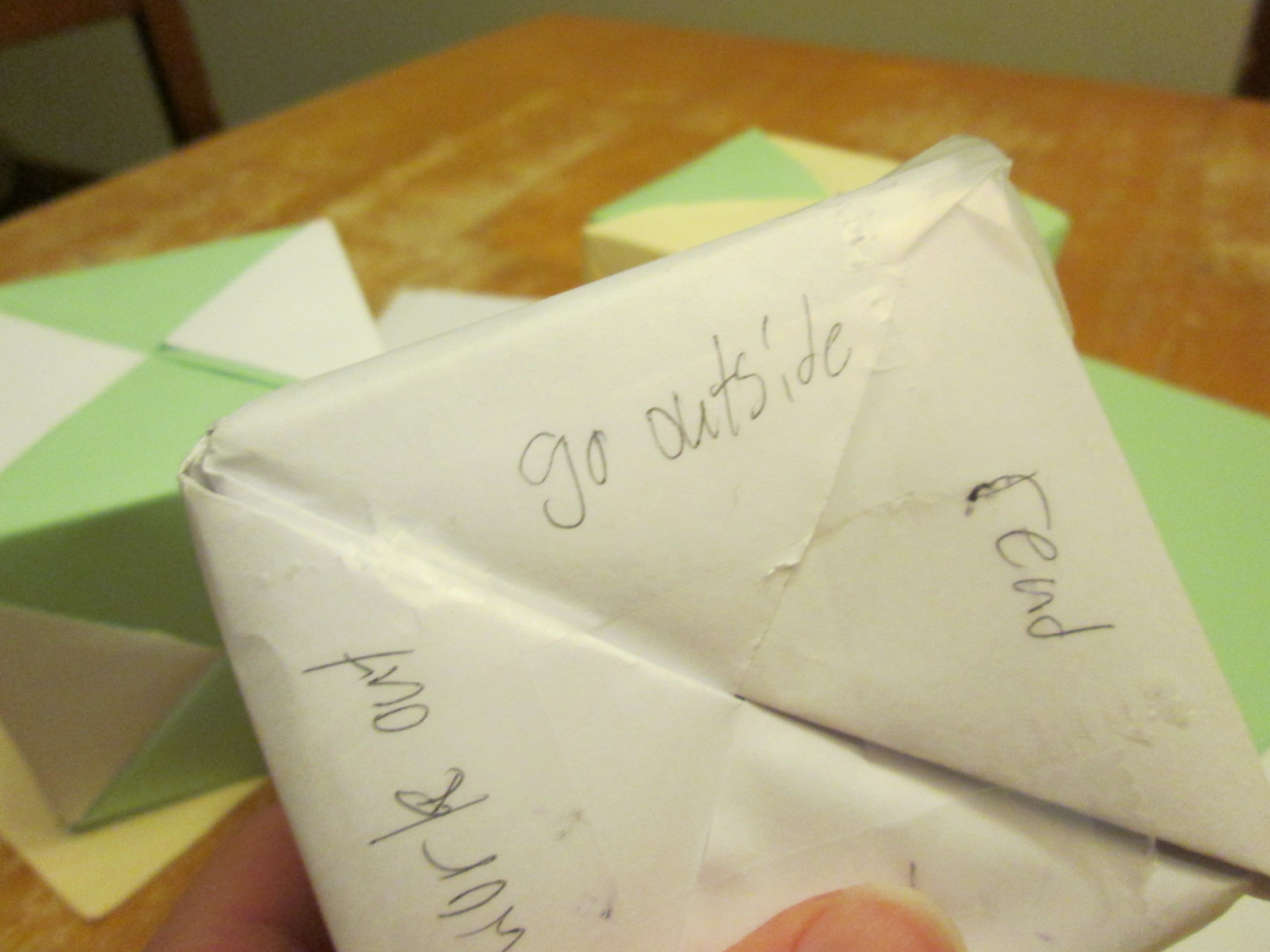
STEP 5: LAUNCH – I like to write stories, and like any writer, I get stuck sometimes. Instead of making a boredom buster box, I made a writer’s box. My box showcased different characters and sent them off on adventures – depending on how the box lands. I love it!
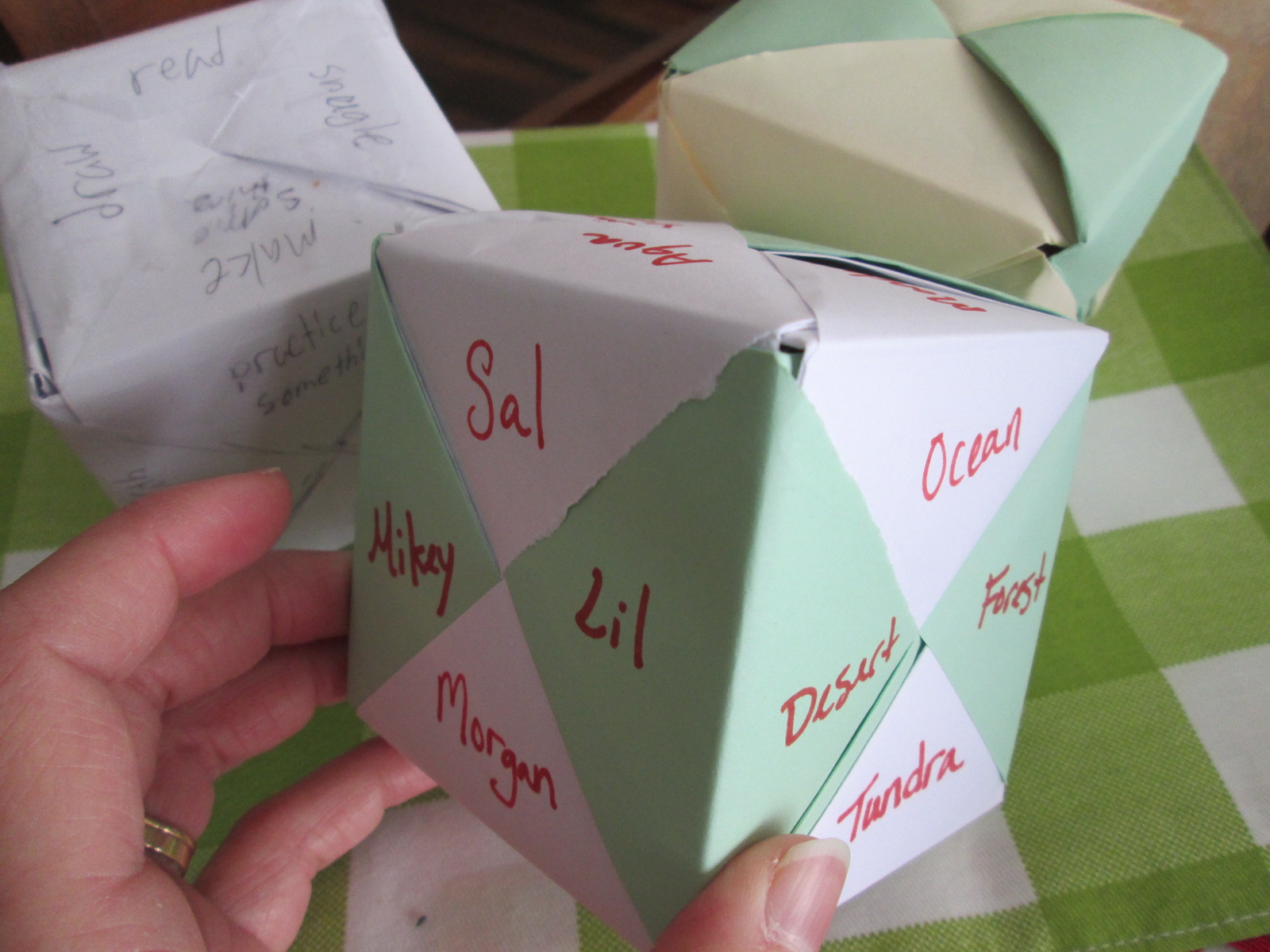
INVENT YOUR STORY! These beautiful boxes can also be used to teach kids fractions (again, that one was Ben’s idea) or they can be strung together to make a fun banner or decoration. Whatever you use this for, it’s a great boredom buster!
Thank you for stopping by. I’d love to find out what you decide to create! Leave a comment if you can, and then go – invent YOUR story! ????
Welcome Inventors! Today we will design an inclined plane that is fun for kids and easy for you. This quick 5-step guide ends with a challenge for kids to create a story using their new invention. Let’s get started!
STEP 1: KNOWLEDGE – What is a plane? Webster defines a plane as a flat surface on which a straight line joining any two points on it would wholly lie. I think a picture says it better. Put a rubber ball on a flat plane, and the ball is still.
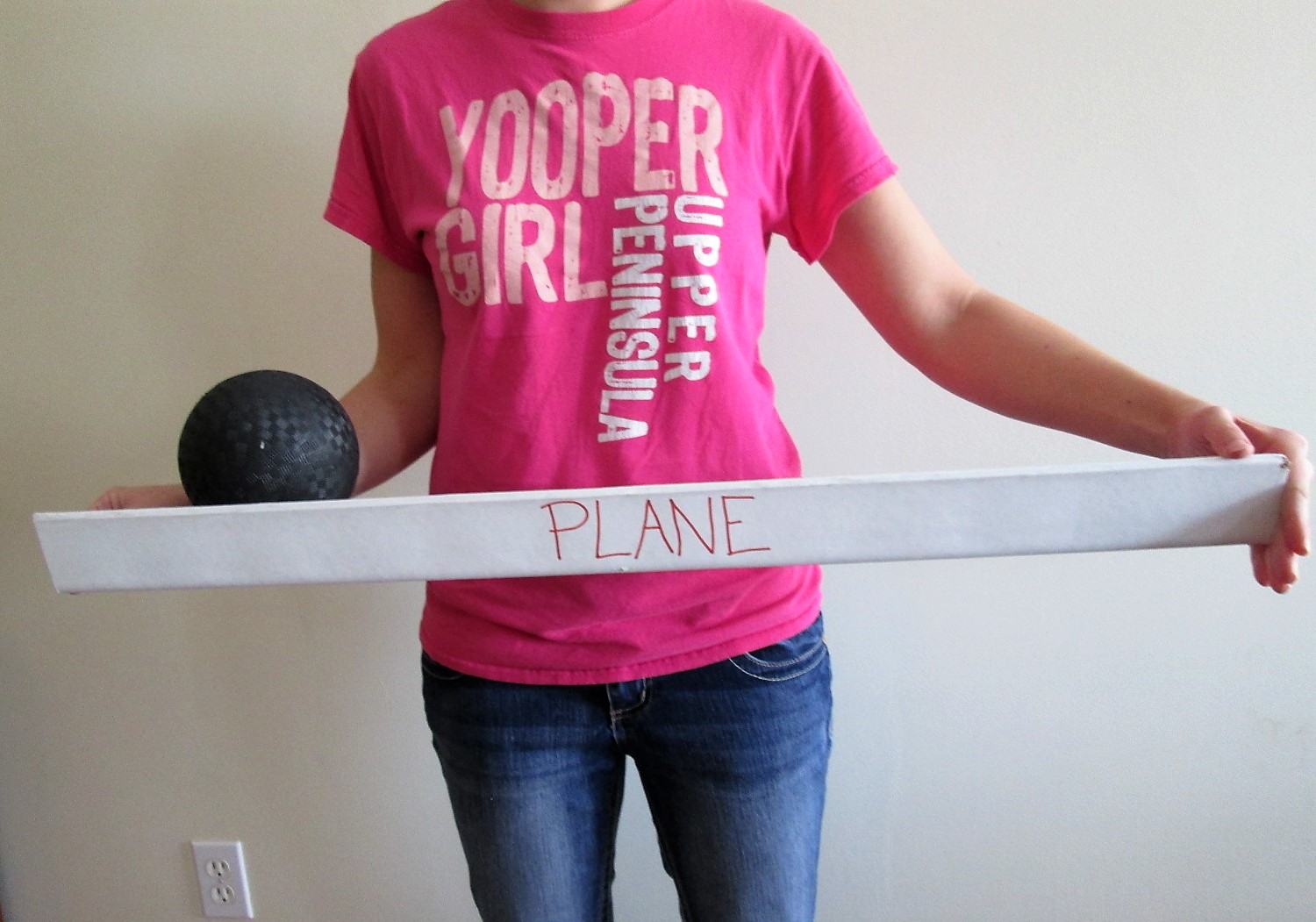
STEP 2: SIMPLE APPLICATION – How do you incline your plane? Lift one end up and BAM! You’ve just invented an inclined plane – congratulations! You may have lost your happy rubber ball.
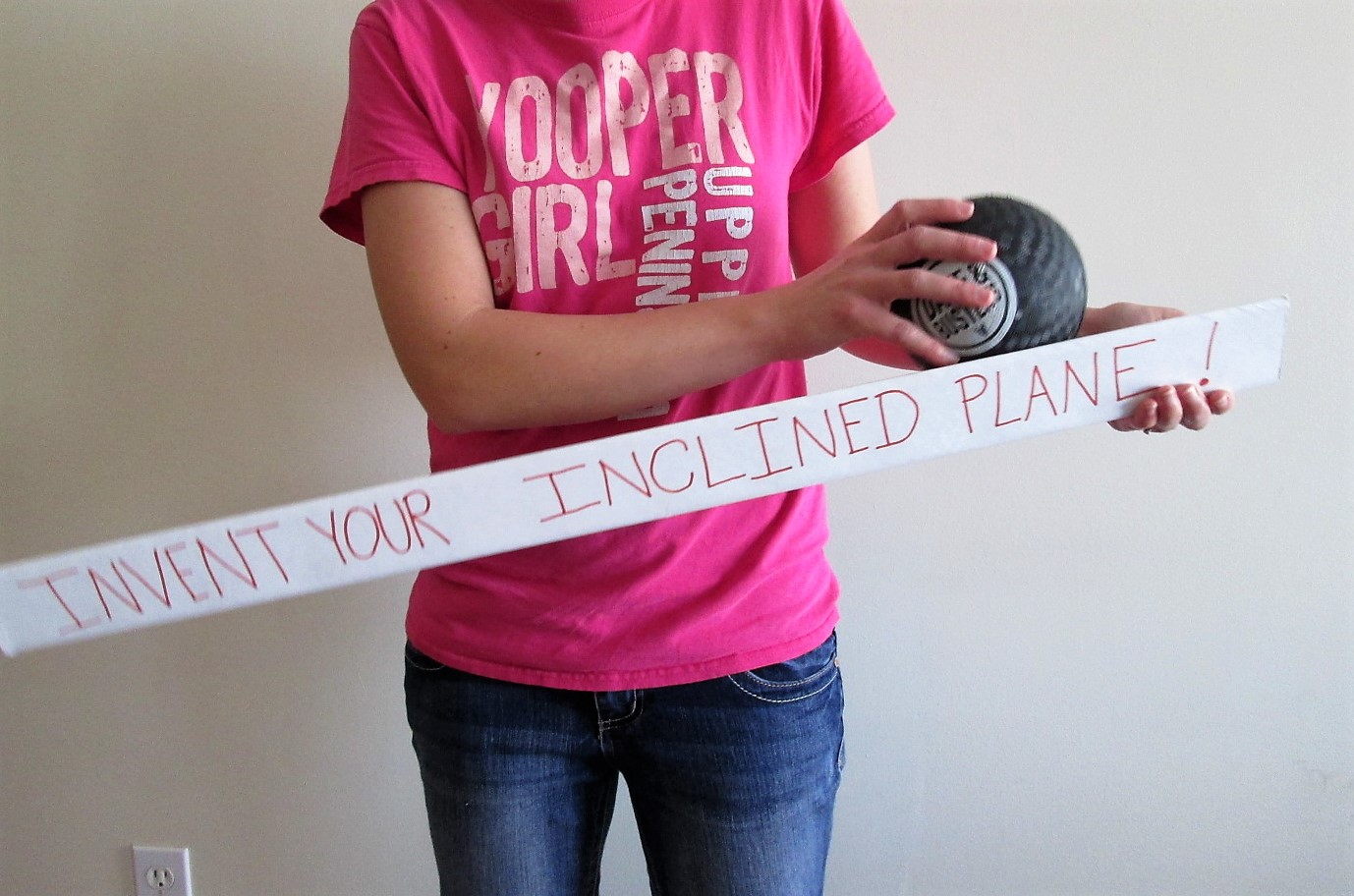
STEP 3: LEVEL UP – Now that we have some knowledge and a simple example of how it can be applied, let’s solve a problem or make something new. You can build an inclined plane out of virtually any flat surface.
My kids and I decide to make a shoot out of our inclined plane. We want a big one, so we find flat materials that we can use to invent a bigger plane: mis-matched tote lids. We need to bind them together, so we use duct tape.

STEP 4: BUILD IT – We line the lids up side-by-side to create a plane. Duct taping them together proves to be a bit challenging, but we overcome!
Note: if you try this exact invention at home, I recommend duct taping both sides of the tote lids. Ours fell apart the first time! Instead of jumping in to fix it, I let the kids come up with a solution. Experience is the best teacher.
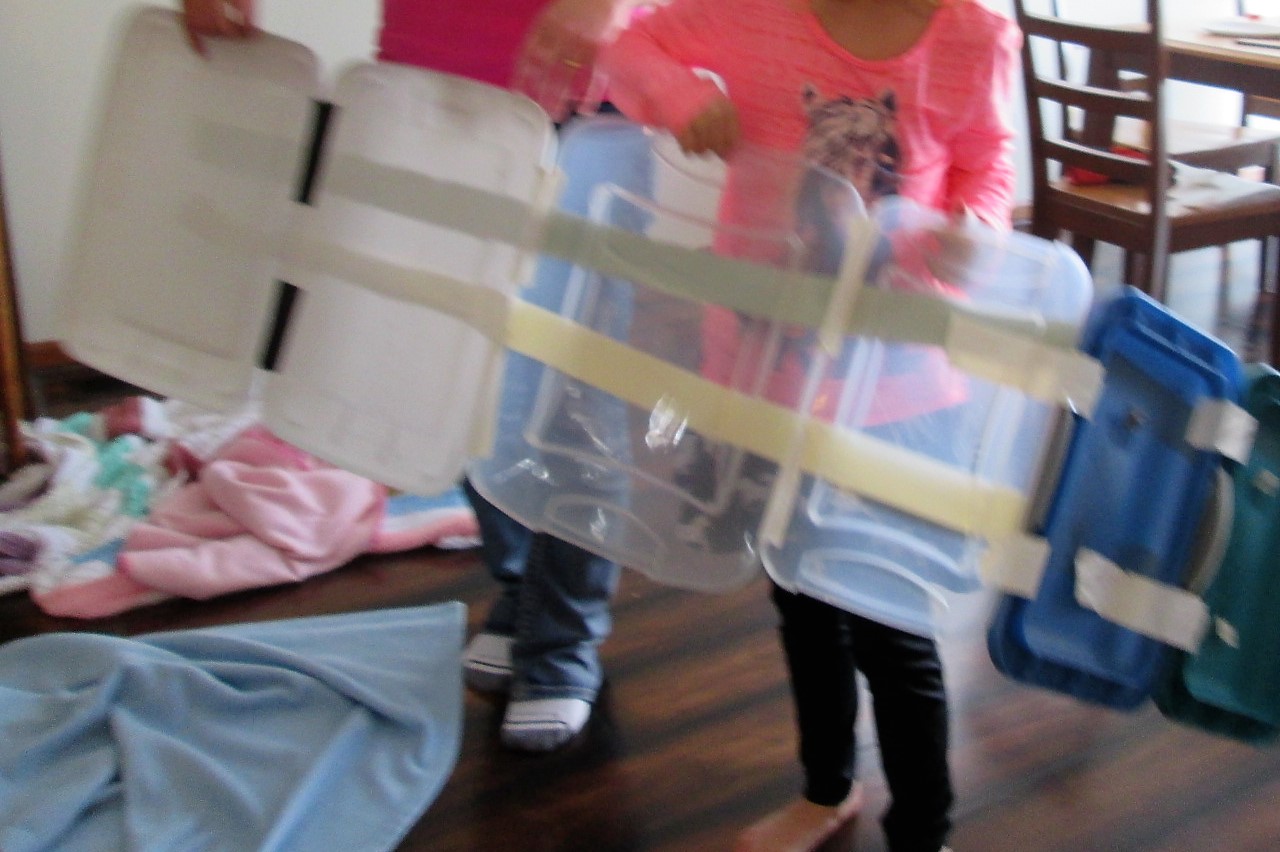
STEP 5: LAUNCH – We duct tape one end of our plane to the top bunk and BOOM! A successful inclined plane. Although inclined planes are traditionally used to move heavy objects UP the ramp, we opt to send things downhill instead.
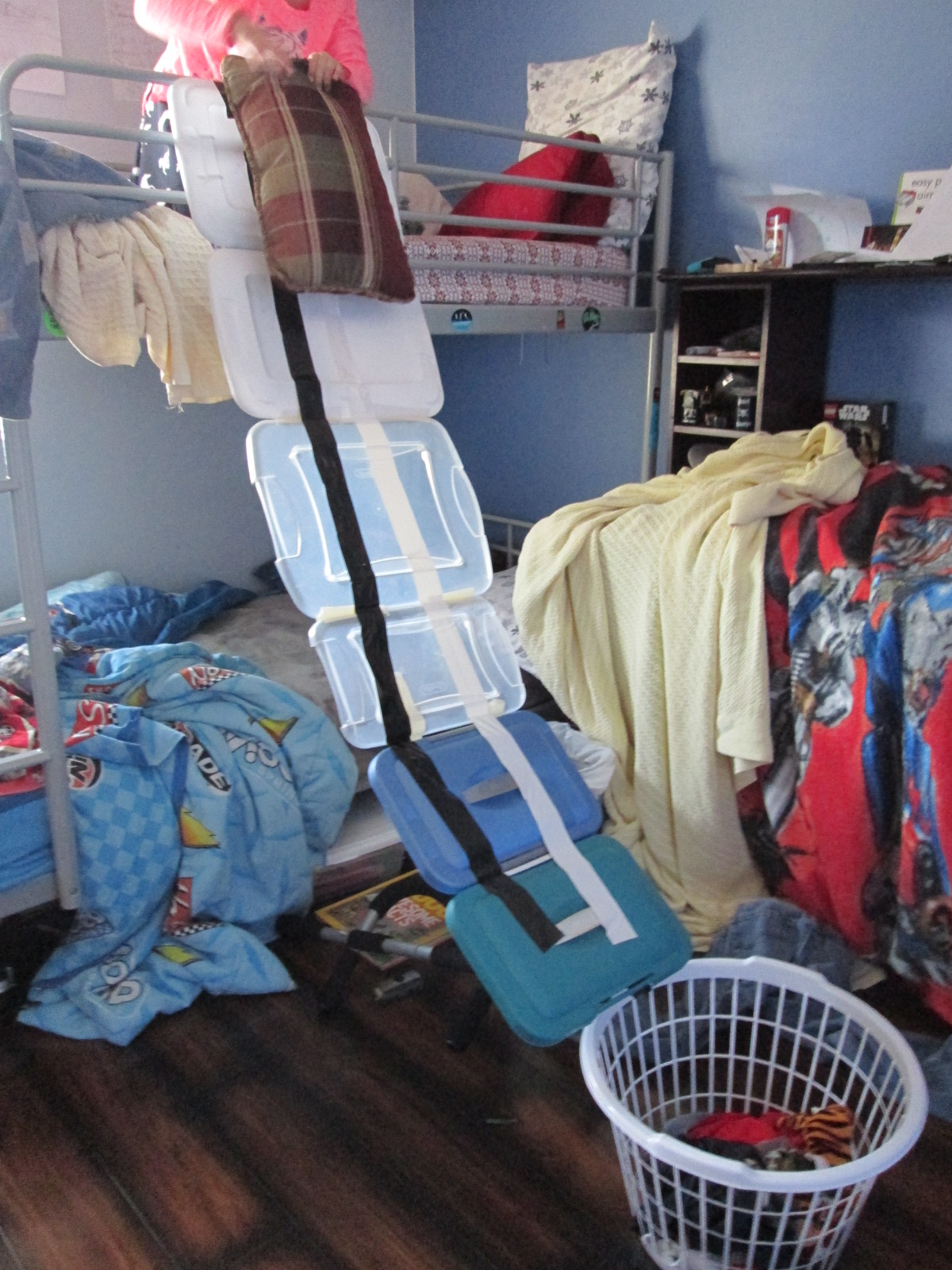
INVENT YOUR STORY! This invention is a now a part of our life story together, and that alone is worth the challenge. But I encourage my kids to invent a story with what we make. We imagine the duct tape lines are train rails, and then we drive steam engines down the ravine into the cavern below. What will you invent with an inclined plane?
Thank you for stopping by today. Please let me know what you think below – and then go. Invent YOUR story! Blessings!
